A slightly different article on Novo-Monde today… Usually, we talk more often about our travels and hikes and finally, not much about our daily work on Novo-Monde and Novo-Media. But this summer, I had the chance to live a new professional experience from which I came back totally amazed I thought that the daily life in a mountain hut deserved at least a a small blog post here. During the summer of 2020 I worked 16 days at the Susanfe hut, a beautiful little hut nestled at the foot of the most beautiful mountains in the world (also known as Dents du Midi ;)).
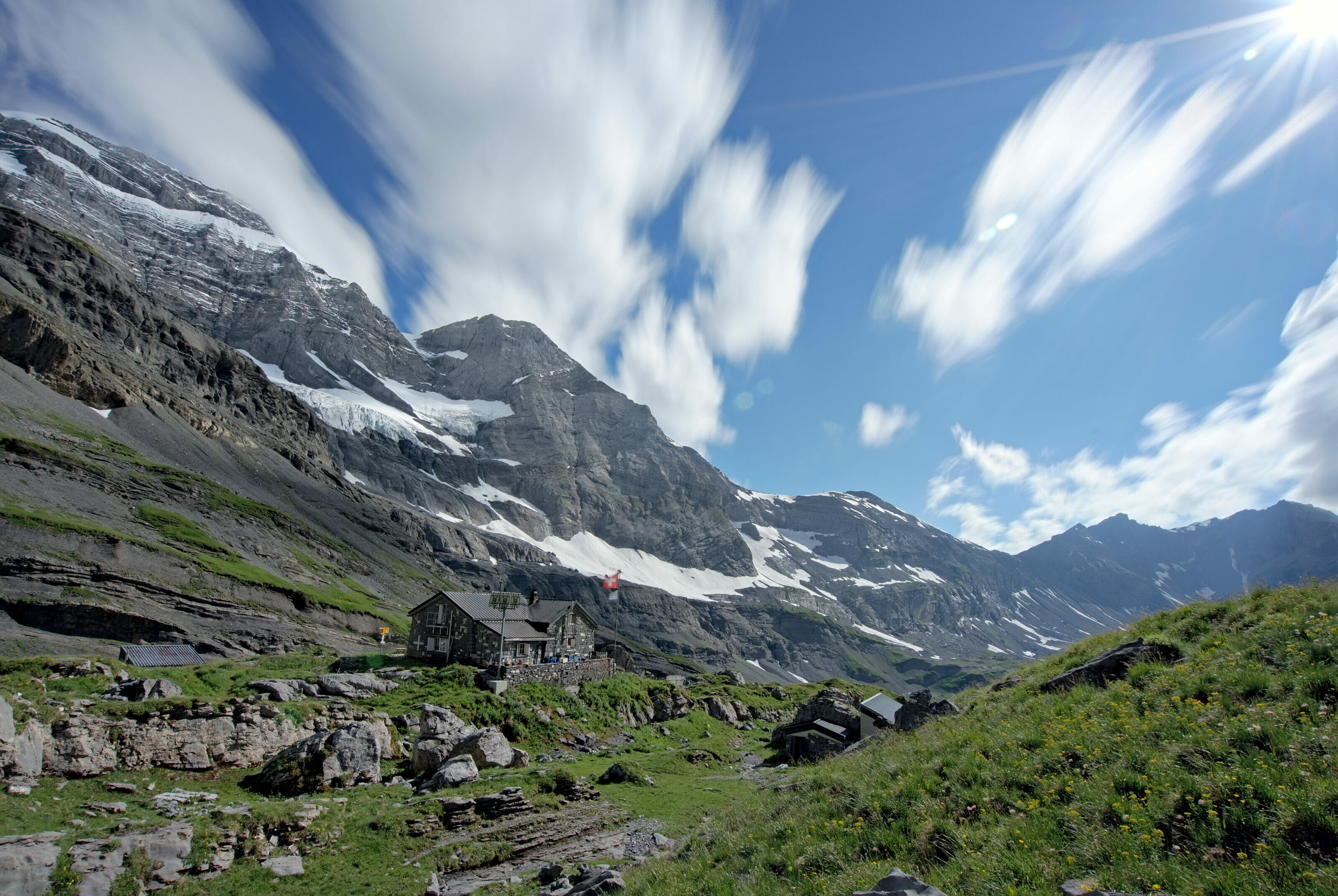
You’ll see, during my 16 days there the pace has been steady. This will surely explain why this article contains less pictures than usual and especially a large majority of pictures taken with the smartphone.
How I came to work in a mountain hut
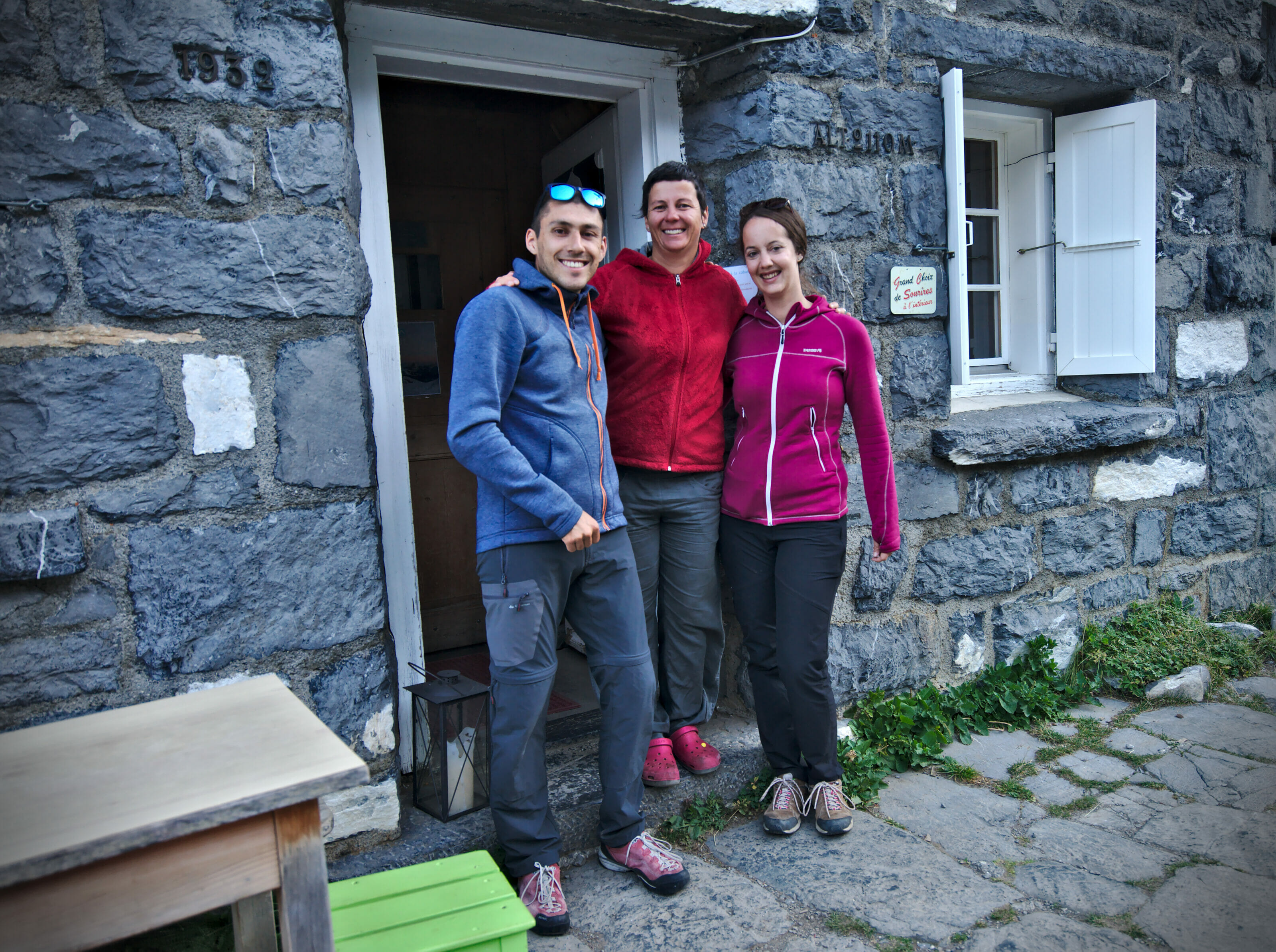
As so often, it’s a story of coincidence and spontaneous decision 😉 In fact, Susanfe is a hut that we already knew well from having been there several times and during our visits we got to know the great hut keeper who bears the name of… Fabienne! (Coincidence? hmmm I don’t think so haha)
In short, 3 years ago we had realized the website of the tour des dents blanches (a French-Swiss hiking tour which passes at the hut). Since then, we kept taking care of the technical part for the site and our contact person for this is usually… Fabienne!
This spring we received an email from her for something to correct and at the end of the email she added us a funny little note: “ohhh you make me envy with your hikes… come on this summer you keep the hut and I’ll go hiking for you!
Message to which I replied very spontaneously: “Oh we wouldn’t be able to do your job, but if you need a hand once I would be motivated to come and help you”.
A few weeks later she contacted me again because she was missing someone for a few days. I didn’t hesitate for a second and jumped on the occasion! Our 100% flexible lifestyle offers us the incredible luxury of being able to say yes to crazy things that life offers us and there is no way I would let such a beautiful one slip away!
At the end of July, I left Benoit at home and I went up to this pretty hut without the slightest idea of what to expect in terms of work! 🙂
If you are preparing the Dents du Midi tour or one of its alternative routes, we have created a complete guidebook in partnership with the association of the Dents du Midi tour. It will be your indispensable partner both in the preparation and on the trails of the tour 🙂

A typical day in the hut: the different tasks
When I told my friends that I was going to work in a hut, many asked me what I was going to do there. Service? cleaning? cooking? The answer is: “A little of all that and a lot more!”
A mountain hut is a little like a small hotel where you have to imagine that every day between 25 and 70 people come to spend the night, eat in the evening and in the morning, go to the toilets and to that you can add a “bar & restaurant” part where dozens and dozens of customers come during the day to drink or eat something. Quite classic you might think… Wel… yes and no 😉
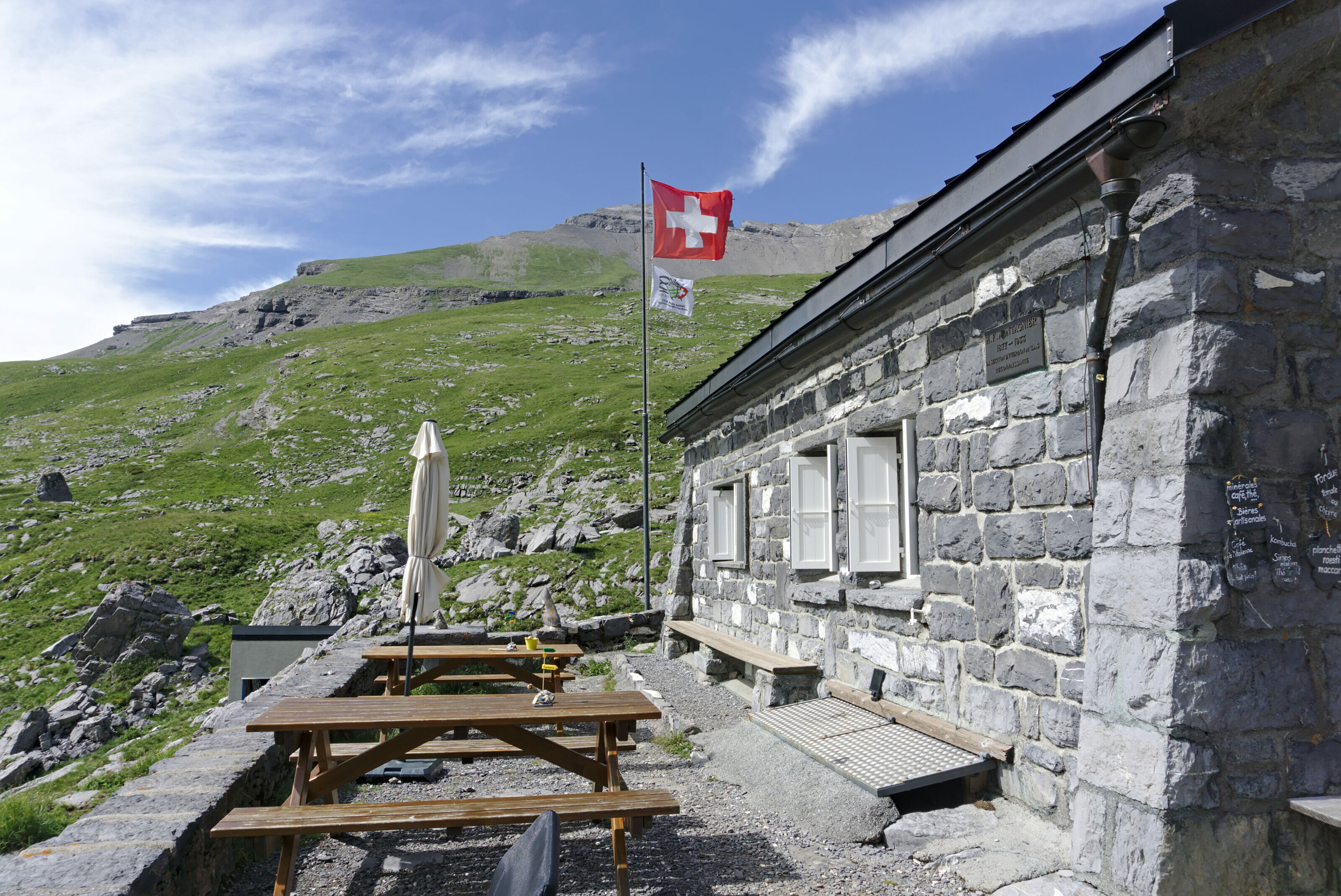
In the hut the big difference is that we are often a little “out of the way” and almost autonomous in a certain way. I will come back to the resupply below but everything that does not get here by helicopter must be done on the spot. I think it is very difficult to give an example of a “typical” day because in the end no day is like the previous one, but to give you an idea here is roughly the course of a day in a refuge.
- 5.30 am: Fabienne (the hut keeper) gets up and finishes to prepare the breakfast for the guests.
- 6-8 am: the customers come to have breakfast and everyone pays their bill before leaving.
- Around 8 am: Helpers are joining. We finish clearing the tables, we put away the breakfast, we do the dishes and as soon as the last customers have left we start the cleaning of the refectories and entrances (broom, vacuum cleaner, mop).
- 9-9.30 am: Time for a first break: the staff breakfast!
- 10-12 am: Cleaning of the toilets, cleaning of the dormitories and putting the blankets back in place, sorting of the garbage, restocking of drinks from the cellar for the day, preparation of 3kg of bread, service of drinks & cakes to the morning hikers.
- 12 am to 2 pm: Lunch service with à la carte dishes. The hut keeper is the main cook (she is the queen of the homemade Röstis and Susanfe macaroni!) and we help out with the simple stuff (soups, planchettes, etc…) and the service.
- 2-4.30 pm: Small catering on the terrace, making pies & cake, 3kg of bread, preparation of water bottles, washing the dishes from lunch and welcoming the hikers of the day (check-in, show them around). This is usually the time when the hut keeper “steps back” a little. But even she’s not behind the counter, she generally dedicates these hours “off” to do laundry, chop wood, do her accounting, stock management, or make homemade jams, etc.
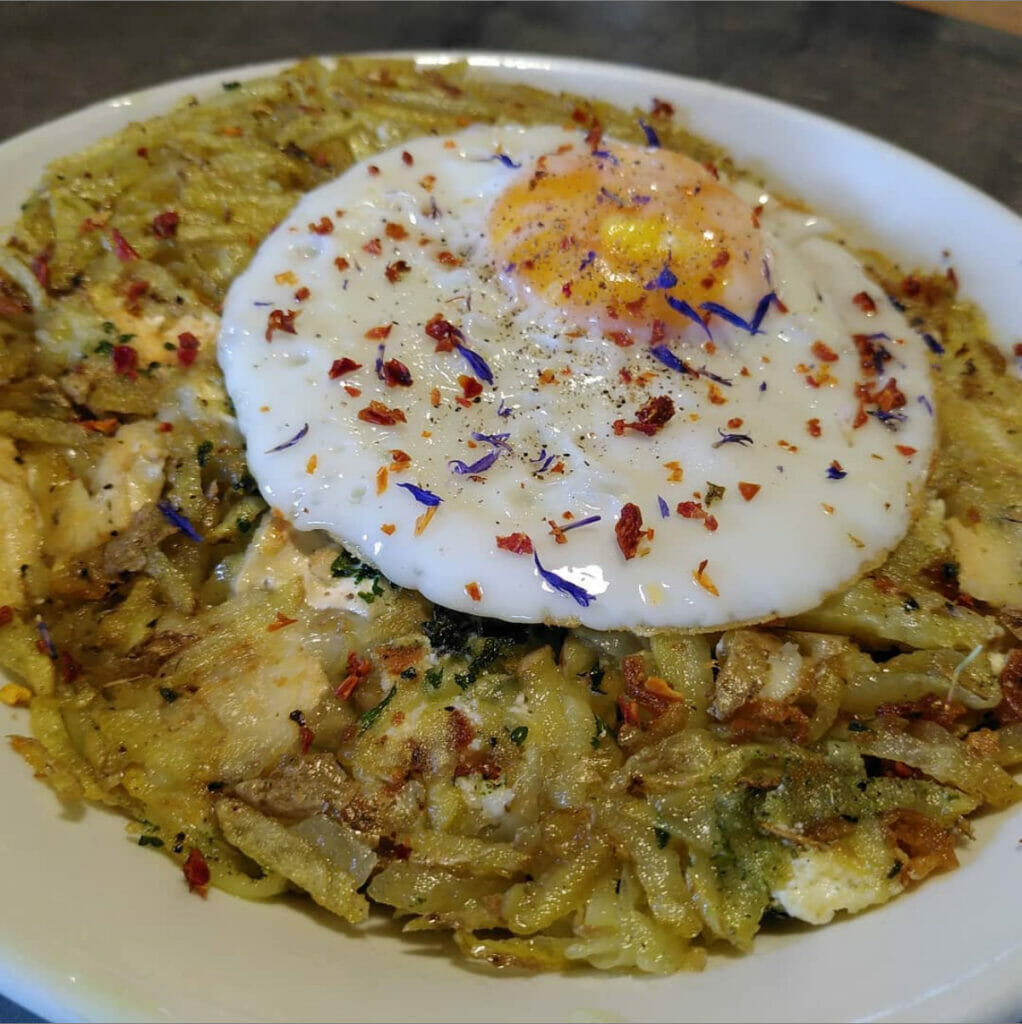
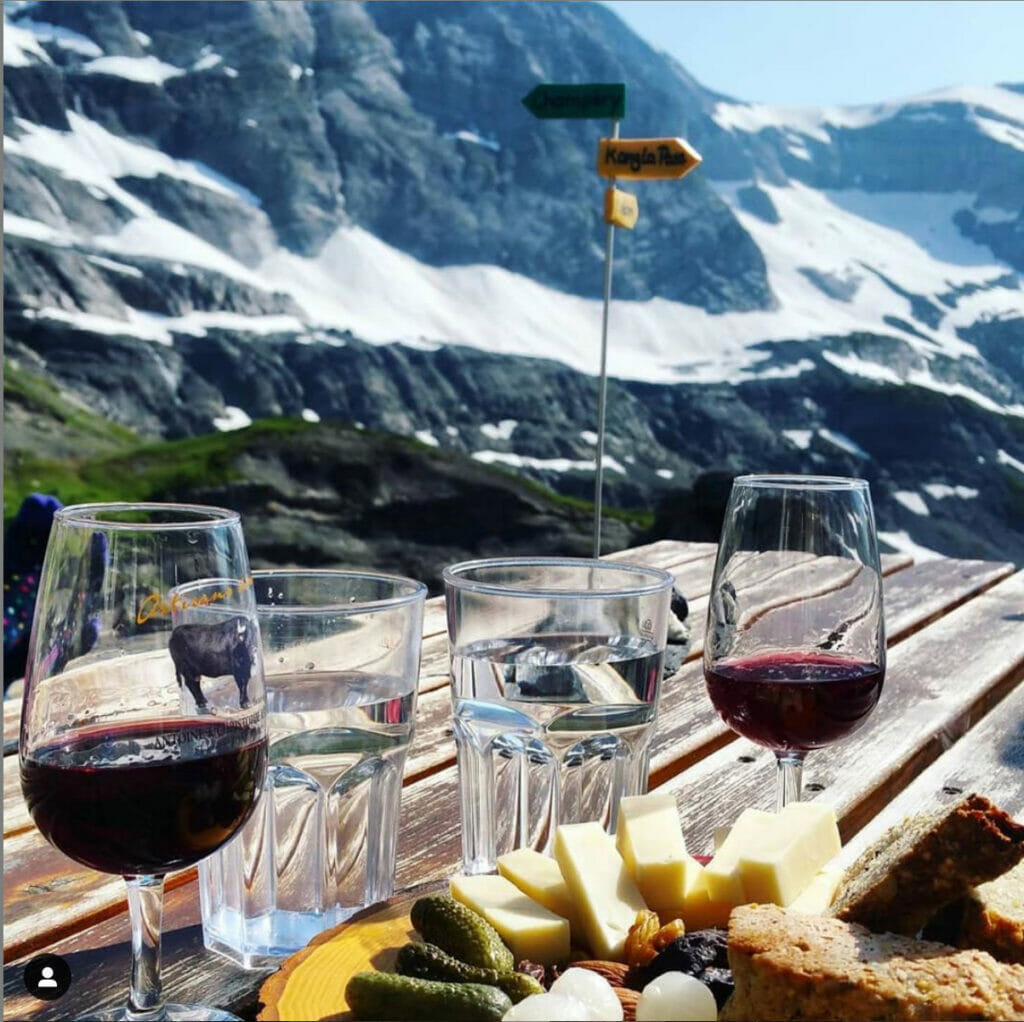
- 4.30-6 pm: The keeper goes to the kitchen to prepare the evening meal. We take care of Beverage service, aperitif snacks, preparation of the next day’s picnics, setting up the refectory for the diner.
- 6.30-8.30 pm: Evening service (meals and drinks), coffee service, weather report at all tables, clearing, doing the evening dishes.
- 8.30-9.00 pm: we have dinner!
- 9.30pm-10.30 pm: last washing-up of the pots and pans, preparation of the hiking tea, accounting of the day. At 10 pm it is the extinction of the lights for the customers: we start the last cleaning of the tables and setting up of the breakfasts for the next morning. 10:30 pm –> we go to bed!
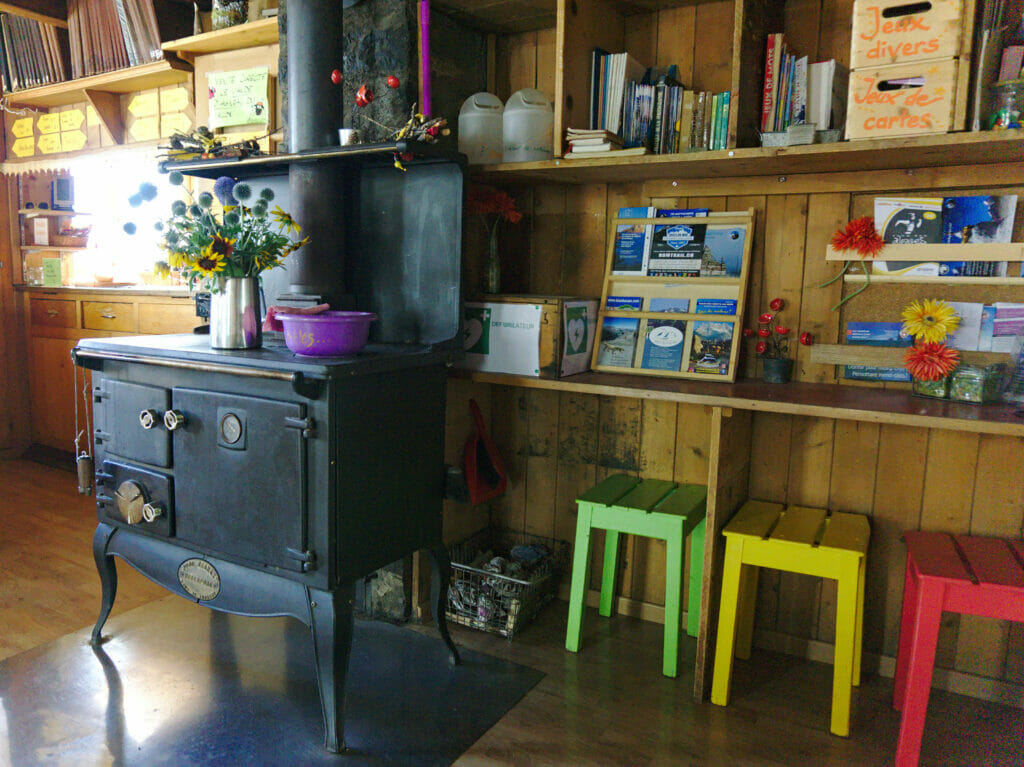
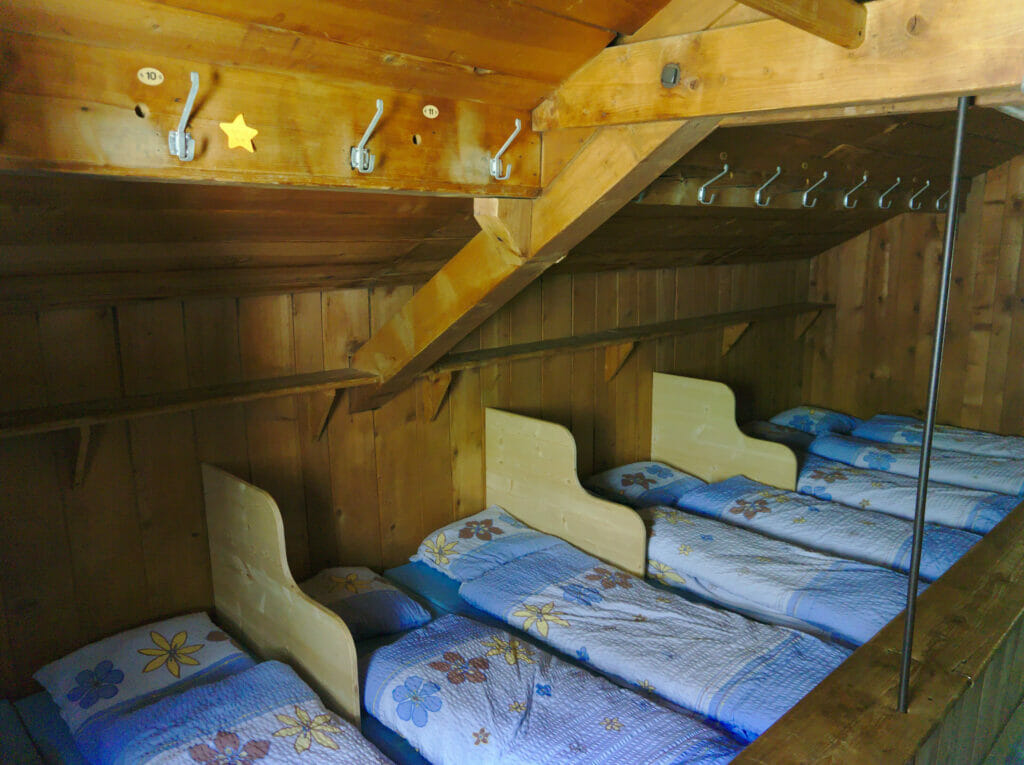
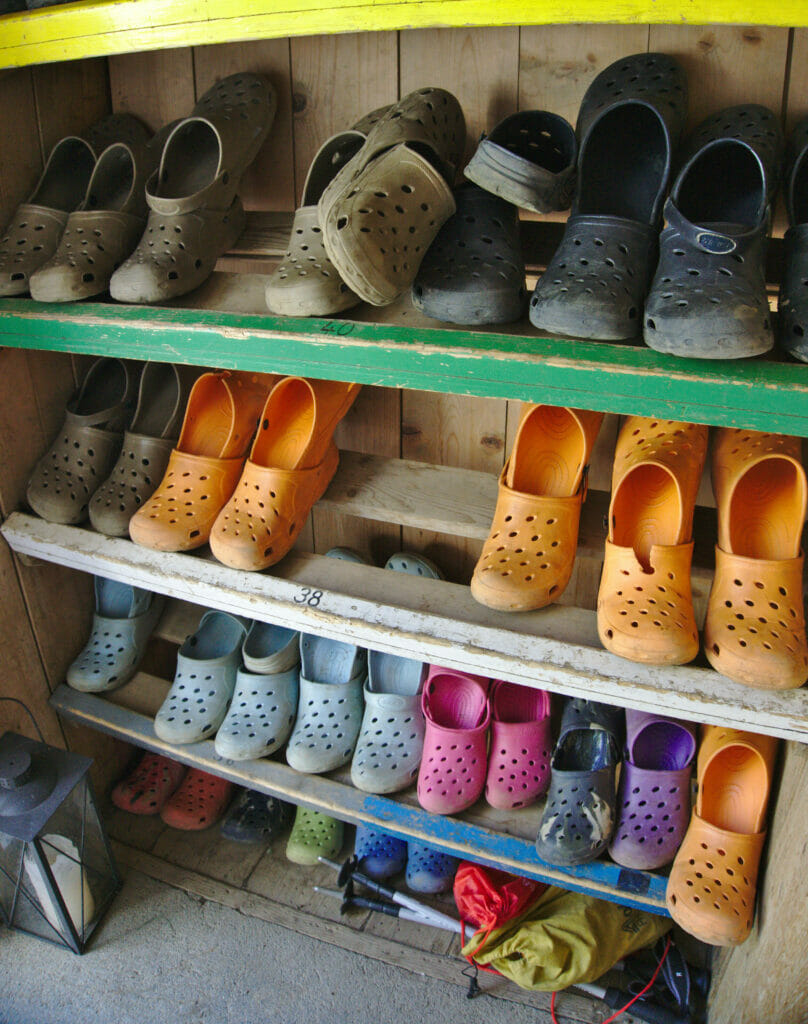
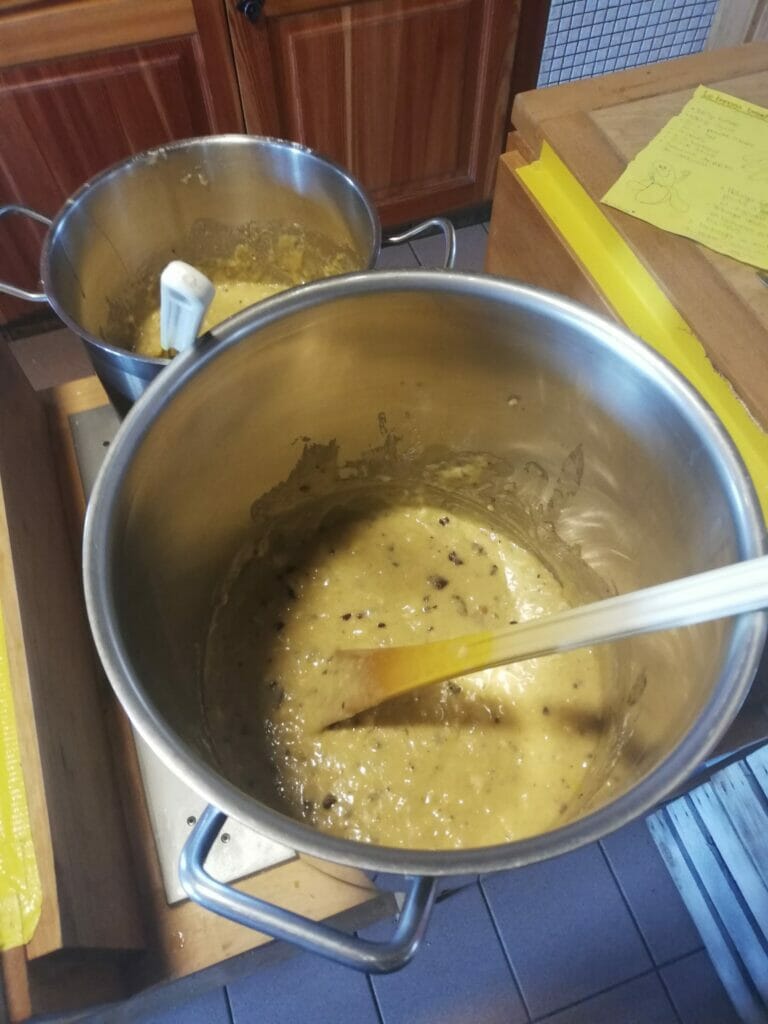
At the level of the staff there is Fabienne, the super hut keeper whom I will speak to you about below as well as between 1 and 3 helpers (according to the period and the days of the week).
For the hut keeper, the day starts at 5:30 am and rarely ends before 10 pm with almost no break (she’s a machine!). For the helpers we have a “lighter” schedule. We start at 8 am and we generally finish around 10:30 pm but we each have a 2 to 3 hour break between 11 am and 5 pm (we take turns).
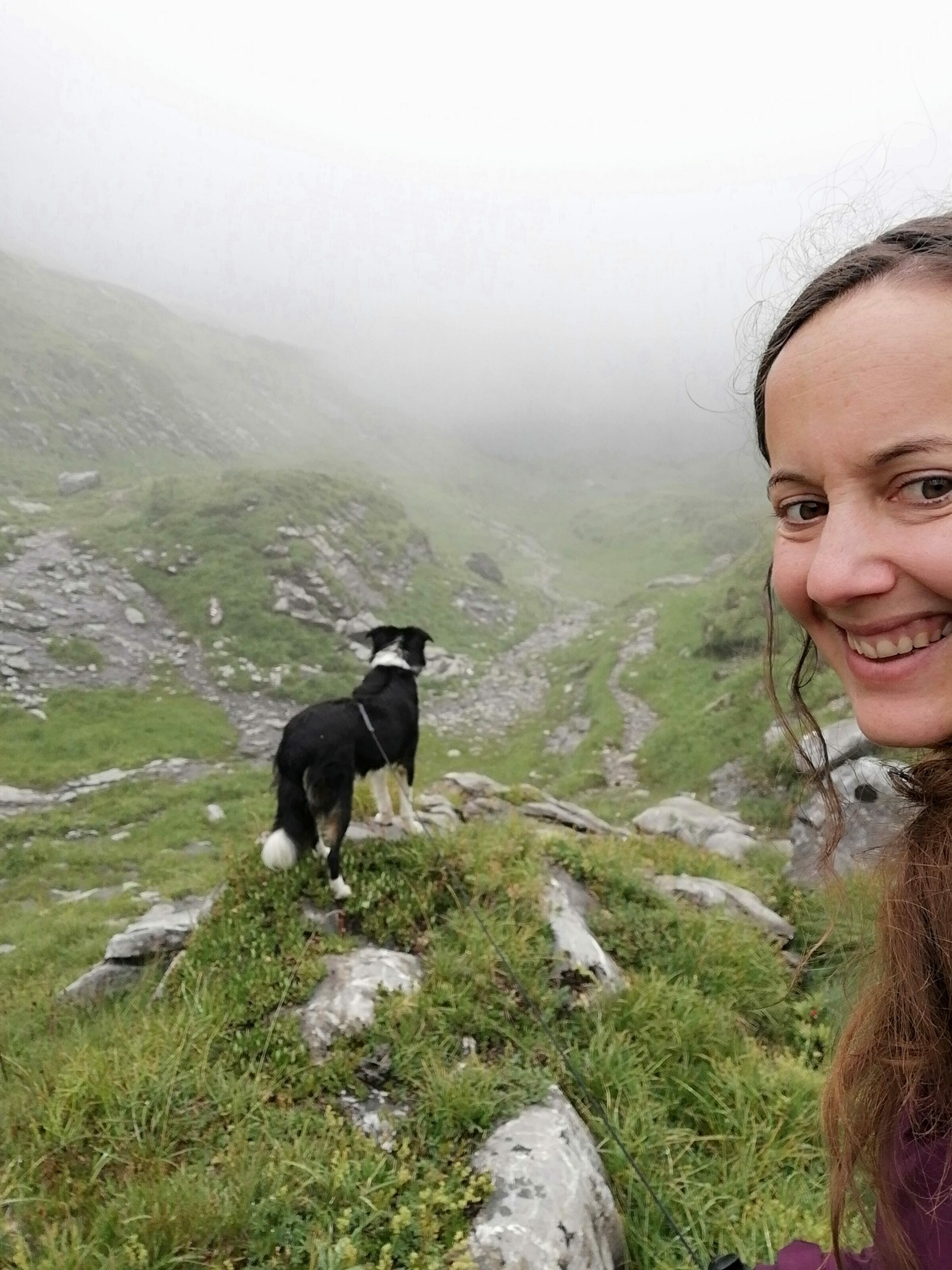
Fabienne is very careful with our breaks and even when it’s very busy she always makes sure we have time to rest.
Breaks are usually dedicated to a little nap in the hammock, reading or just enjoying the sun (when it is there). But if we still had energy, the cool thing was to go for a walk! Some helpers had the legs to make the round trip to the haute cime in 3 hours… Hmmm far from being able to do such a performance (it would probably take me 4-5 hours) I preferred to go for a walk not far from the hut with Himlam, Susanfe’s adorable dog.
The Challenges of Living in a moutain hut and Working as a helper
Living in a mountain hut is not quite the same as being on the plains for many reasons… I thought that a short list of the more “difficult” things could be interesting.
Physical work
Ok, this point is not directly related to the life in the hut but for me I admit that this was my first challenge. I’m used to doing sports, but my “normal” daily life mainly consists of sitting in front of a computer. So I walked a lot (or even ran), carried, kneaded, lifted, and repeated a lot of small gestures many times. My step counter regularly congratulated me for my 15km of the day even though I hadn’t even left the hut haha!
The day after my first day of work, when I woke up in Susanfe, I felt like I had passed under a truck (yes I might slightly exagerate here but you get the idea ;)). Luckily the body gets used to it quickly and after a few days “you get the rhythm” (and the muscles that go with it).
And fortunately sometimes there are yoga sessions that take place in the valley to help relax the muscles 😉
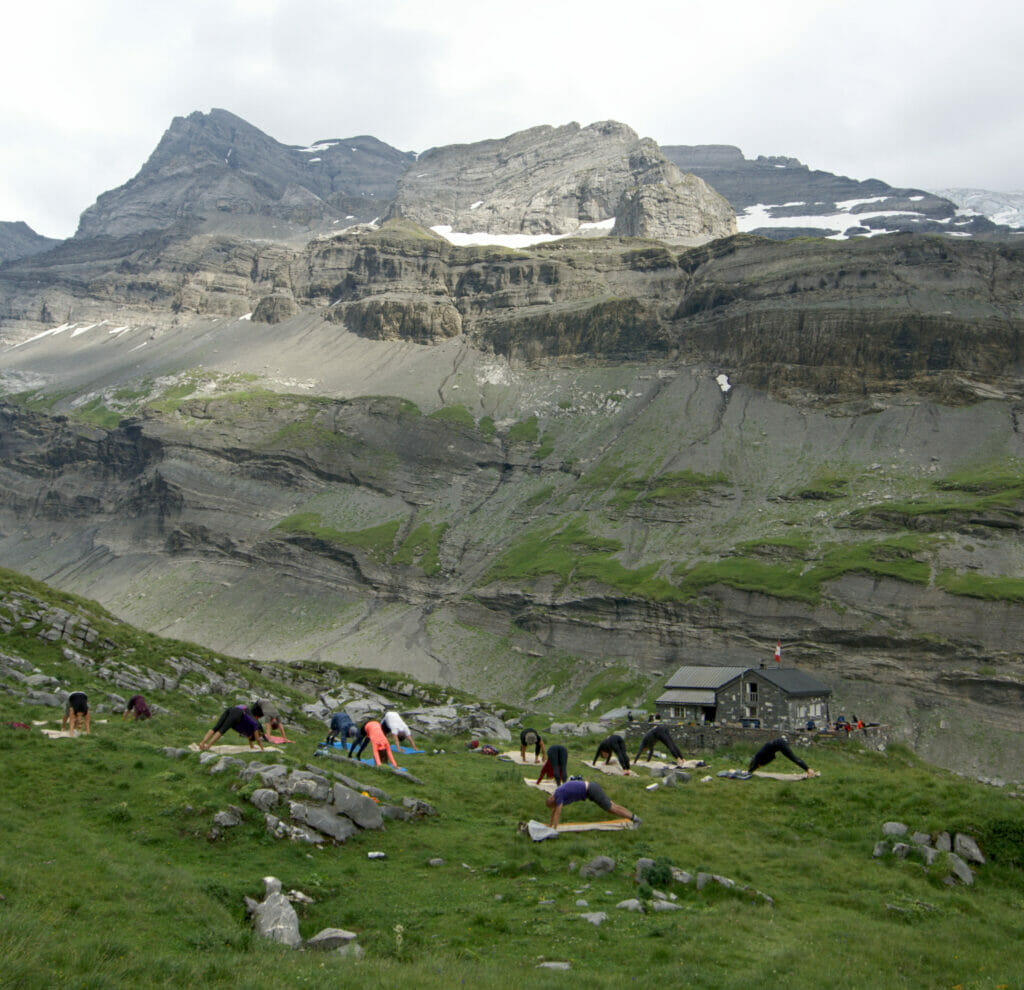
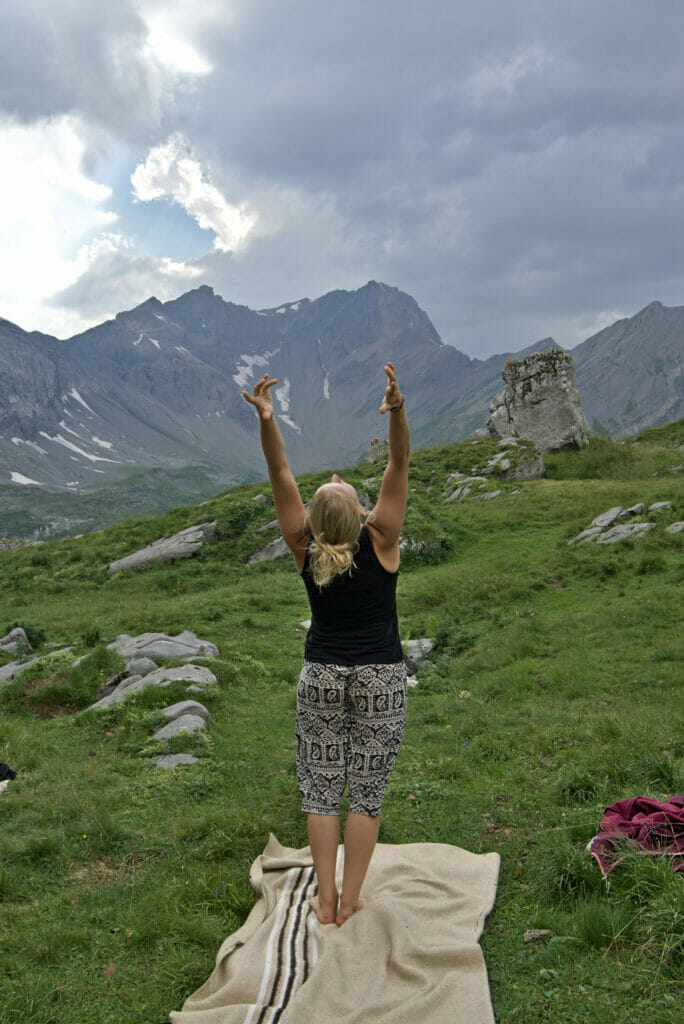
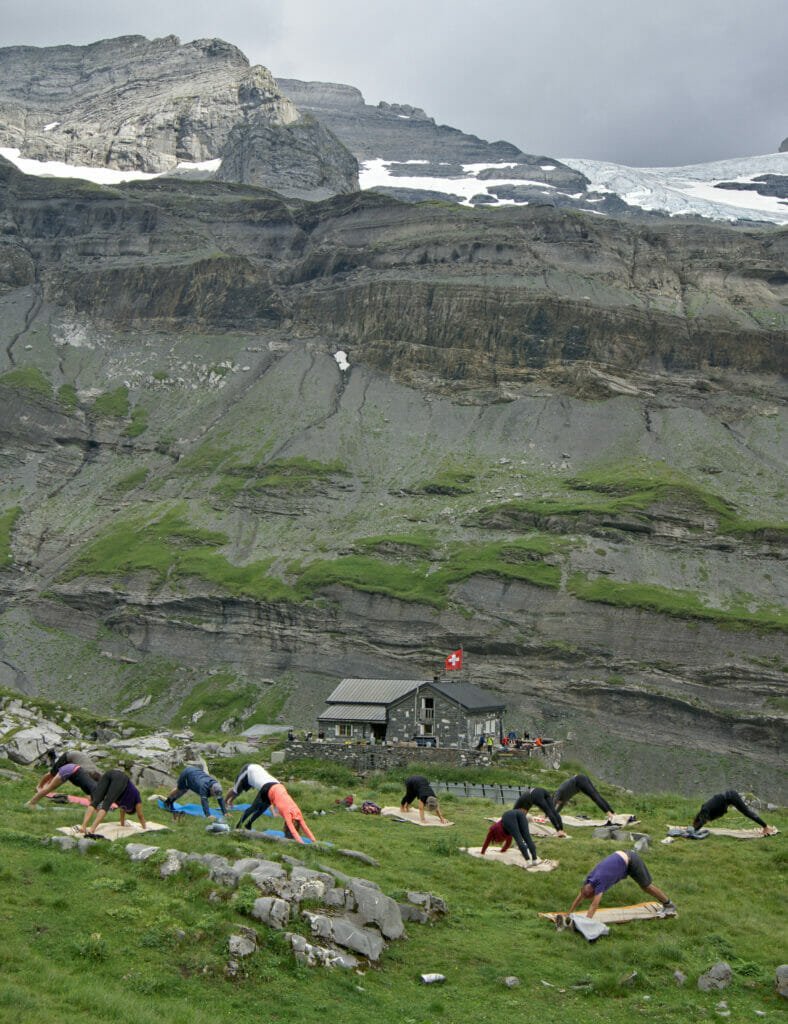
Limited space and logistics
I don’t know exactly how many square meters is the Susanfe hut but at a glance I would say less than 150. In this space there are:
- A kitchen
- 2 dining rooms
- 3 dormitories
- 2-4 staff members
- between 30 and 70 hikers (during the covid it was rather between 20 and 45)
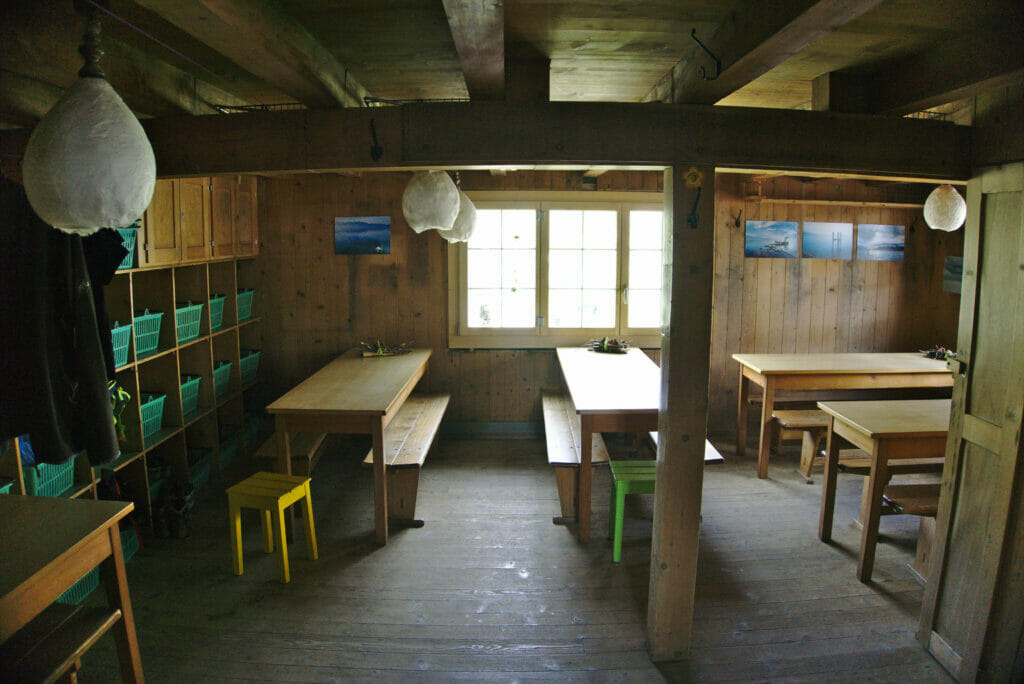
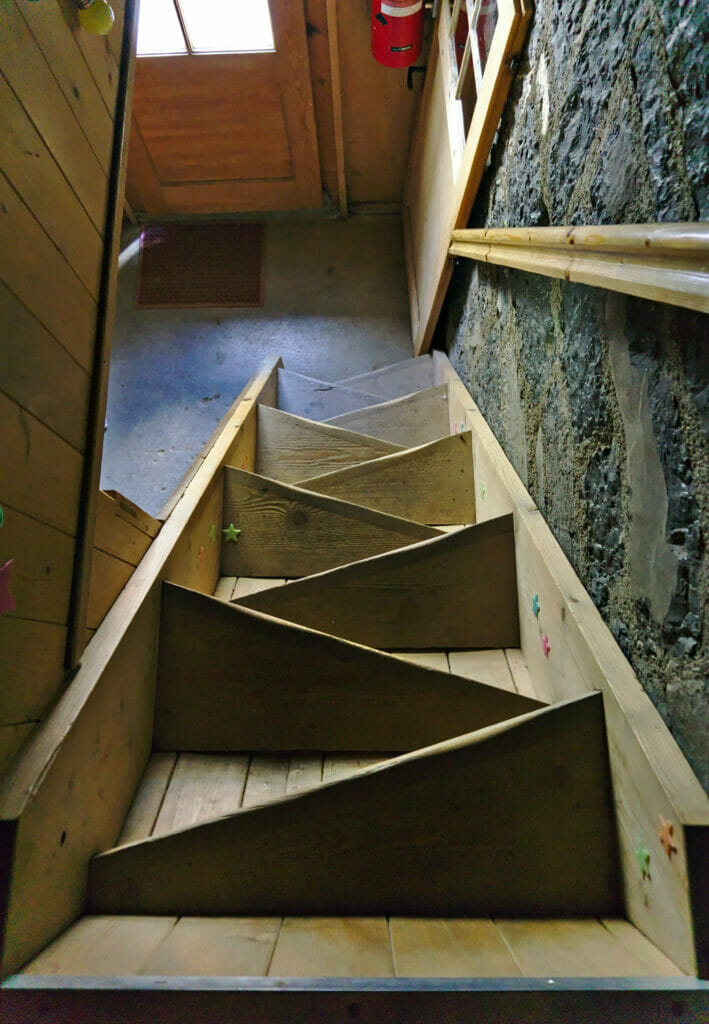
Limited space means solid organization! Everything has its place and it is really important to always stay organized and tidy up as you go along. Some stocks are in the basement, others in a storage room outside and others are in small hiding places scattered all over the hut. No ceilings, walls or floors have not been optimized and you would be amazed to see where astronomical stocks of toilet paper or chocolate can be hidden 😉
That was my biggest challenge in the beginning! When you arrive in a great organization but you never know where to put the stuff, the first days can be a bit of a struggle. Fortunately, Fabienne, Amandine, Louise and all the others were very patient and I was able to get into the swing of things pretty quickly.
Electricity
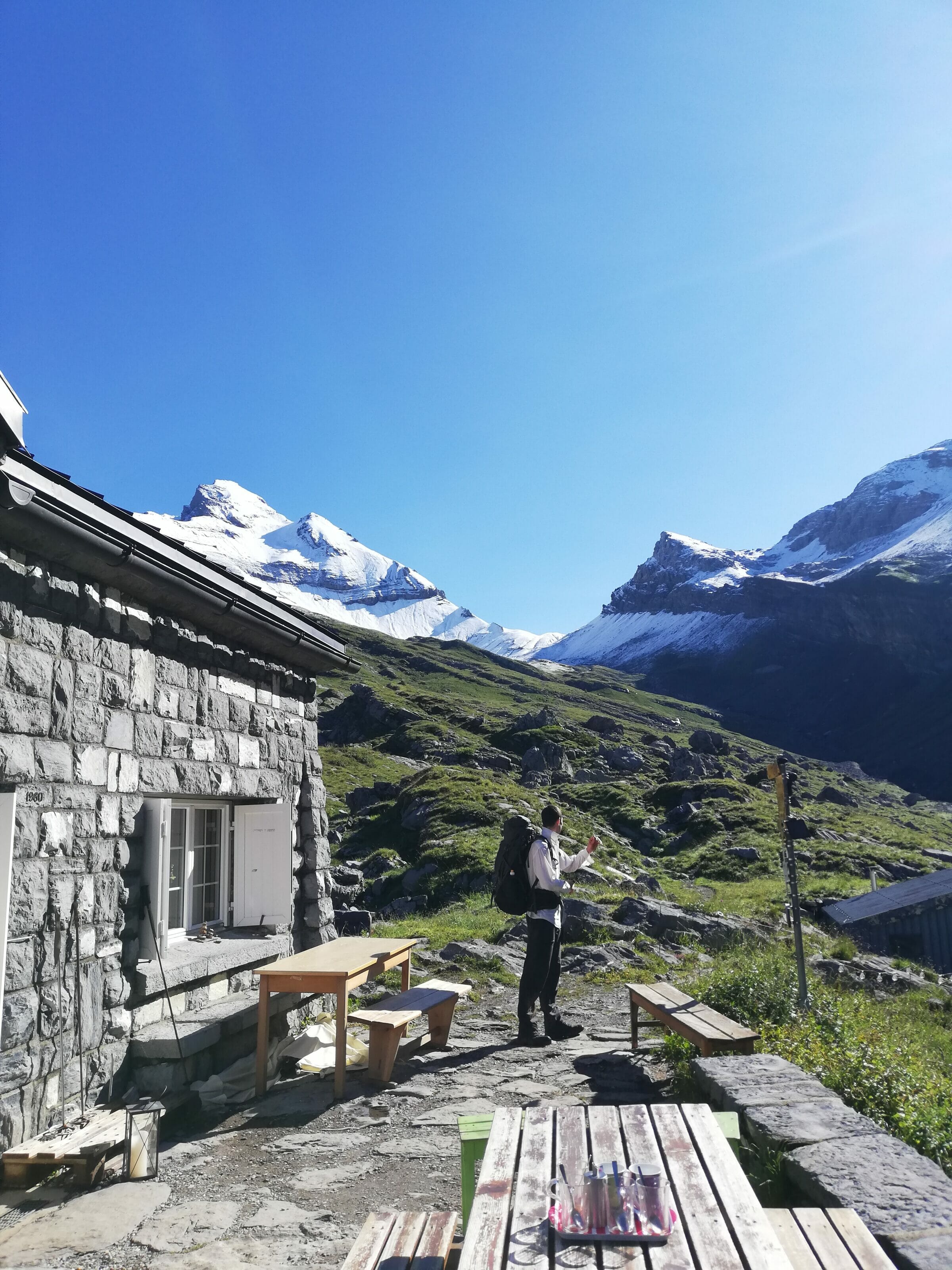
For many years Susanfe’s hut had no electricity as such. There was a generator that they could run from time to time but clearly every KwH was counted! Now things have changed a little bit, the hut has a nice solar installation that allows to use various utensils like a blender or a vacuum cleaner without asking too many questions. The panel is very efficient but of course you still have to pay attention to your consumption, especially if the weather is rainy several days in a row 😉
Drinking water
At the hut we are not connected to the water network. This means that we have taps in the toilets and in the kitchen, but it is spring water which is not controlled. What does it mean concretely? It means that it is good and very fresh mountain water, but we cannot guarantee that it is good for drinking. For example, if a dead animal contaminates the spring, no one would know, or at least not immediately. The result? It is not possible for the hut to “give” jugs of water. We can point out the taps of the toilets to hikers who want to fill their water bottles, but we cannot fill them because the water is simply not controlled.
All the water that is served to the guests (in tea, coffee) has been previously boiled for long minutes. The hut also offers water for sale that has been previously boiled, cooled and bottled. The price (3CHF per liter) is not to “make a profit” as one can sometimes hear, but simply a fair price for all the work behind it (it takes time to do all these things when you multiply it by the number of people passing every day).
The weather
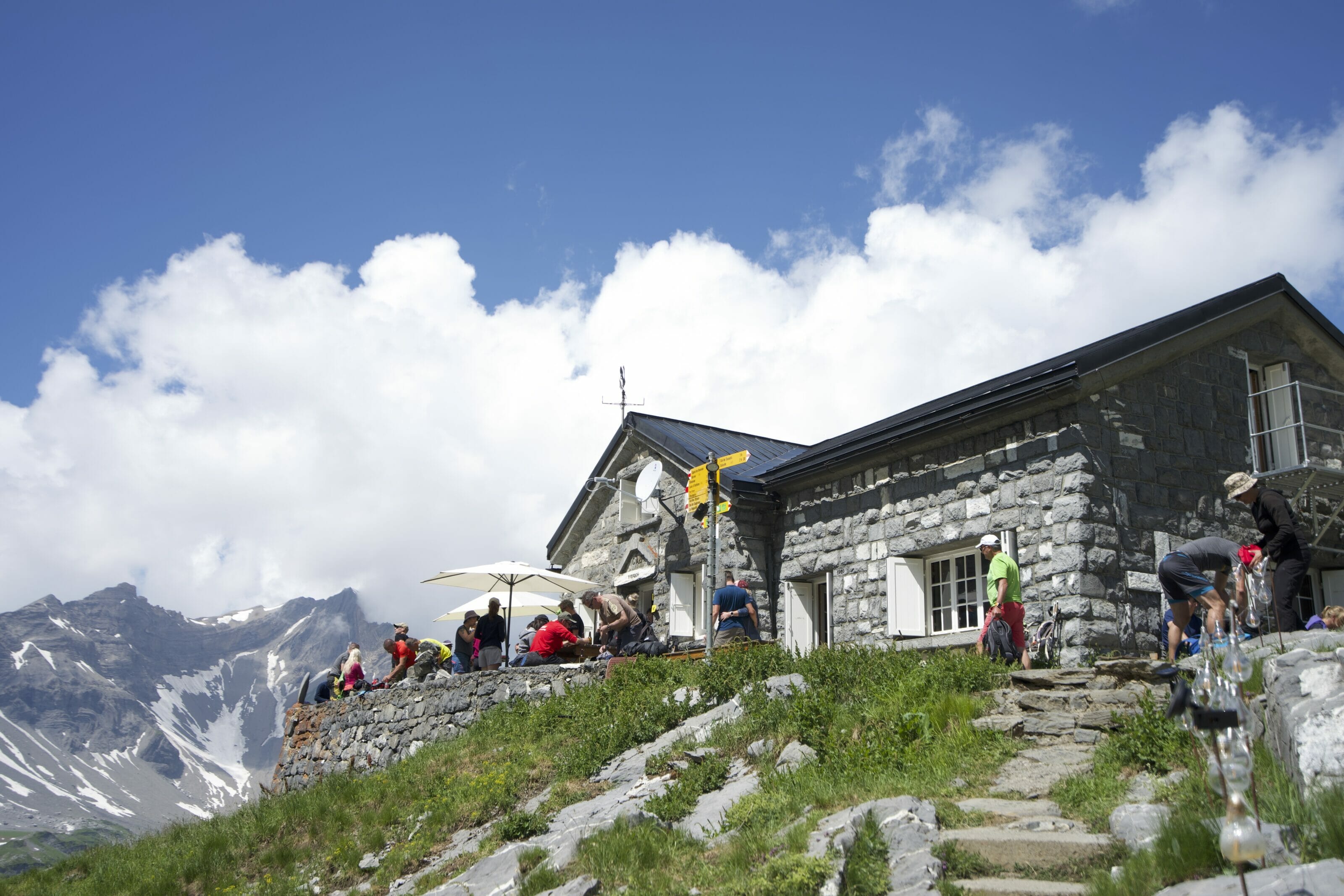
This is not a “difficulty” in itself since in the hut we are warm and dry in all weathers, but let’s just say that it requires some adjustments. When the weather is nice, there are a lot of people who come during the day and we spend a lot of time at the service, which generally leaves little time to make pies, cakes, breads, etc… On the other hand, when the weather is dull there are far fewer people and you have to take advantage of every quiet moment to “get ahead”.
The second point is that in the mountains the dangers of a storm or snowfall are not the same as in the plains. We regularly make weather reports to inform the hikers and to avoid that they find themselves on a pass in the middle of a storm. Fabienne (the hut keeper) has an excellent experience in the field but sometimes it is necessary to insist a little bit to reason with some hikers who want to go at all costs.
Our friend Coco (or rather the enemy should I say)
This year is a special year for tourism… The covid arrived like a whirlwind this winter and has created a lot of uncertainty in the hotel and restaurant world. In a hut you may be a little “cut off” from the world below, but on this point you should not joke. Everyone was delighted to be able to open this season anyway, but clearly the covid creates some additional “logistical” challenges.

In Susanfe the capacity has been greatly reduced. There are, in theory, 70 beds but this summer the shelter is full when there are between 25 and 45 people at the hut. Why this variation? In fact it all depends on the size of the groups. People who know each other and arrive together are placed at one table and sleep side by side in the dormitory. On the other hand, when people do not know each other there are 3 empty beds separating them from the others and they have a table for themselves (or a very large table where 2 couples can be placed while respecting the distances). In short, the bigger the groups are, the more people the hut can take. It’s easy to see, this summer it’s full every night!
There we could say: “oh but it’s great, less people = less work for the staff”. So I didn’t work the other years, but discussing it with Fabienne and Amandine it is far from reality. With the covid there are many more things to think about and many small gestures had to be rethought:
- Everything that is put on the tables is disinfected between visitors (menus, sugar bowl, pepper shaker, small table garbage cans, serving trays, etc…).
- Tables and benches are allocated by us and disinfected regularly.
- Toilets and common areas are disinfected much more often.
- Meals are served on plates for small groups (they used to simply put a large dish on the table and people would help themselves).
- A lot of things have been individualized: for example, for breakfast, instead of putting a big jar of homemade jam on each table, we now fill individual mini jars that we put at the disposal of each hiker.Every time we bring something into the kitchen that has been touched by someone we disinfect our hands.
- etc…
Nothing very dramatic we agree, but let’s say that it requires good organization and rigor!
People
I hesitated to include this point because in the mountains the atmosphere is generally excellent! People are relaxed, respectful, in a good mood and in 95% of the cases the encounters are just great. But then, when every day you see a hundred people coming and going (between those who spend the night and the day hikers), there are also some “cases” that exasperate you… Some grumblers because we don’t serve fondue anymore at 5pm when we are preparing the evening meal, some little rascals who hide bags of garbage on the terrace because they don’t want to carry them in their bags, the one who thinks it’s “crazy” that we sell half a liter of coca 5 CHF when it arrived by helicopter, the one who doesn’t like the evening menu and who would rather have ordered a cheese crust instead…
It’s little things and in 99% of the cases everything can be solved easily and with a smile. But inevitably, there are days when it’s more complicated to manage.
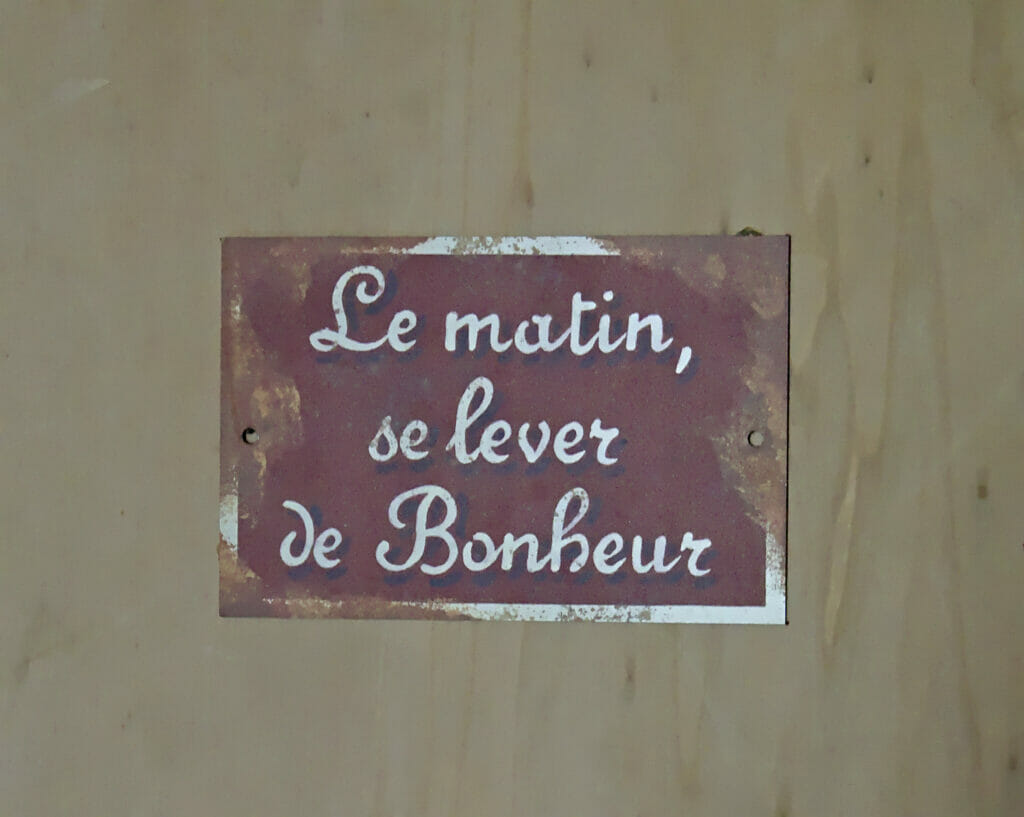
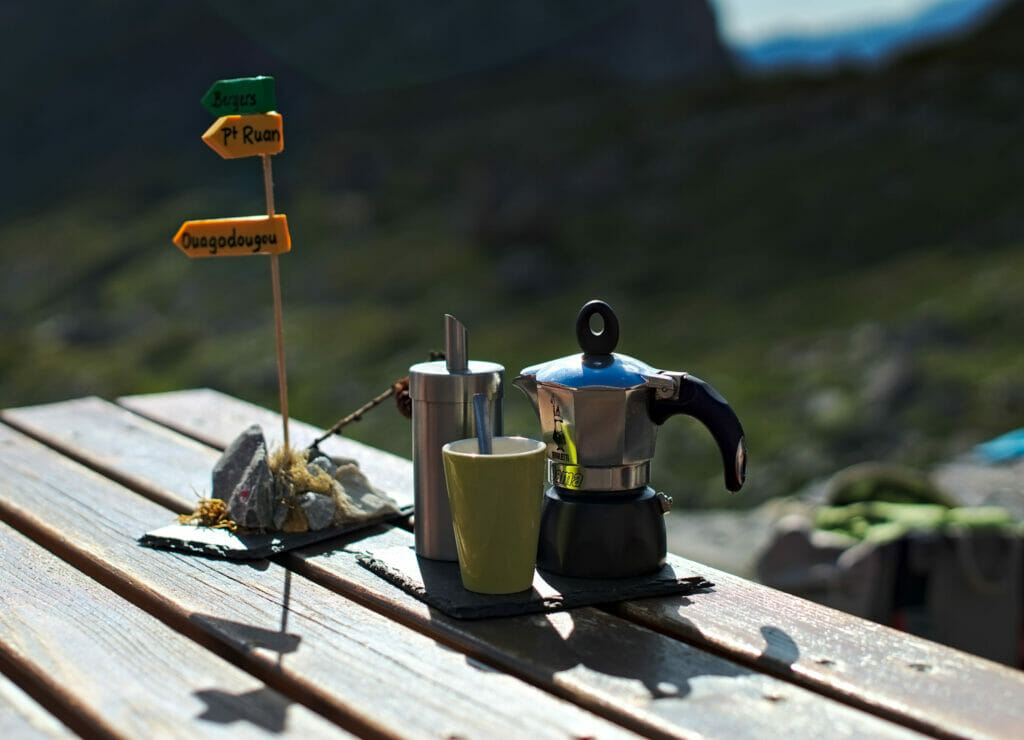
Anecdote:
Tired, grumpy and cranky people will always exist… There is nothing we can do about it. But at the hut we had a little “game” or rather we set ourselves “missions”: To drift and make the grumpy smile! Amandine, the super helper who works at the hut is the queen in this discipline. The goal? When someone arrives and we feel that he is not in a good mood, that he is annoyed by something and that he speaks to us “badly” we adopt an attitude one might call “300% happiness” and we redouble our smiles. The goal? Flood him with good vibes to get him to smile. This technique doesn’t work every time, but it does have a good success rate; few hikers leave in a bad mood!
The supply of a mountain hut
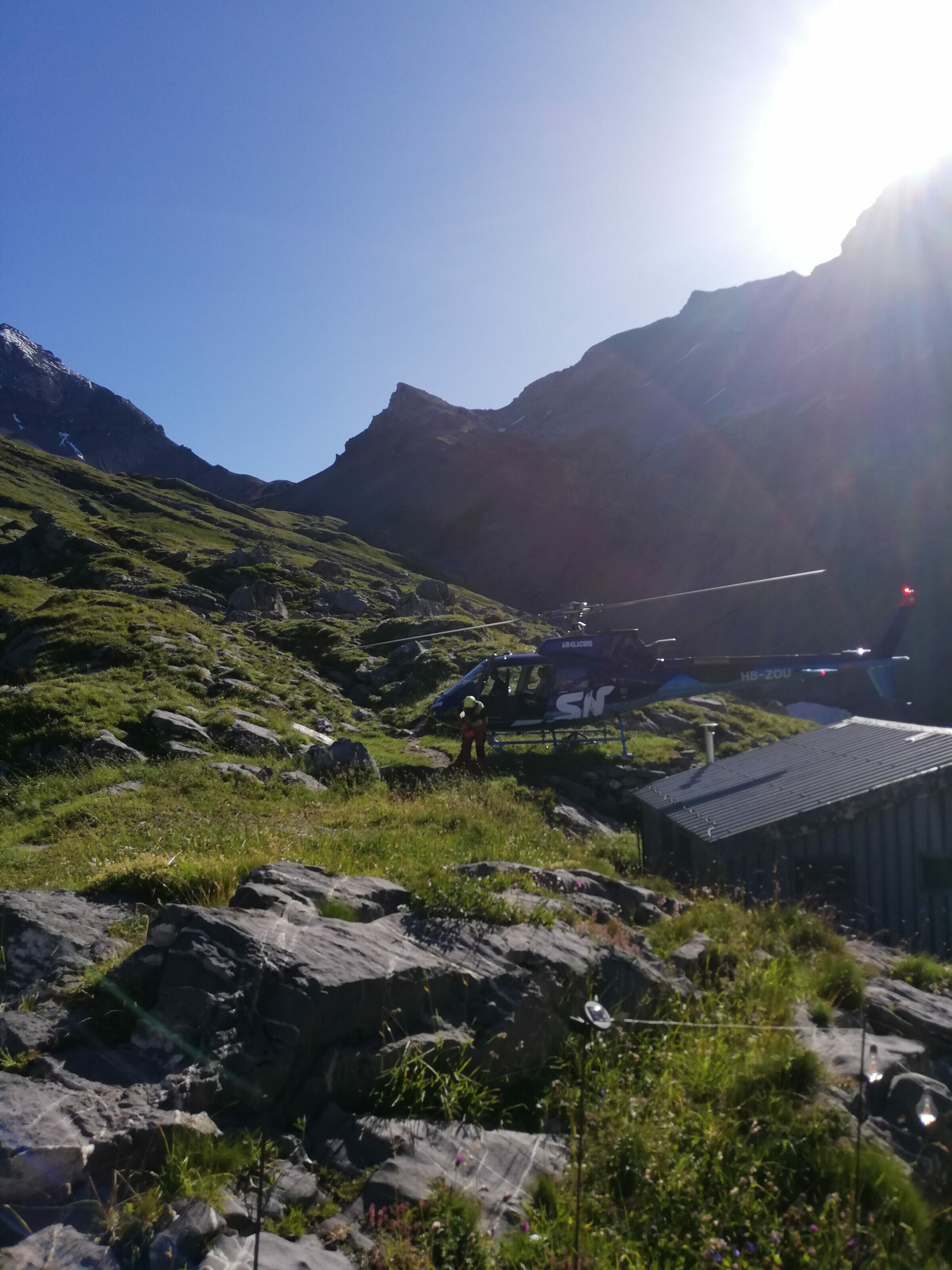
When we think mountain refuge we often imagine the good fondue with a view and the little glass of white that goes with it… We think of the deckchair where we can enjoy the last rays with a breathtaking view of the mountains… But in fact, we rarely think about how this fondue pot, this glass, this deckchair or even the beds arrived at the top. 😉 Some huts have access by road, others resupply by donkey, but the vast majority of Swiss huts are delivered by helicopter!
In the mountains, helicopters are and remain the “simplest” way to bring provisions. It sounds easy said that way, but in reality the supply is a real logistic challenge for the hut keepers! You have to order, pick up the supplies or have them delivered to the base of the helicopter, prepare the nets and above all be prepared for a last minute change if suddenly the weather is bad.
Helicopter resupply is expensive (very expensive!). The price is usually composed of a basic tax and a rate per minute of flight, so to limit the costs it must be fast, very fast!
Conduct of a refueling:
- One person (often the keeper) goes down to the plain and does the shopping / coordinates the deliveries so that everything is on time at the helicopter’s departure point. All provisions are placed in huge nets that are then carried by the helicopter and deposited in front of the hut. A round trip of the helicopter with its load is called a rotation.
- The helicopter goes up to the hut for the first time without a net. It lands next to the hut and lets out the keeper and a flight assistant (the person in charge of unhooking the nets and ensuring safety on the ground).
- The helicopter goes back to the plain. There it does not land: the previously prepared nets are hung and it goes back up to the hut.
- The net is placed in front of the hut without it landing.
- Usually the helicopter will not leave “empty” for the next rotation. All the waste generated at the hut is prepared in nets and the helicopter brings it down.
- The helicopter leaves and at this moment the staff of the hut activates to quickly clear the supplies from in front of the hut (the next net will be landing at the same place a few minutes later). The helicopter goes back and forth until all the provisions are up.
- During the last rotation the helicopter lands again next to the hut to take the flight assistant and leaves again.
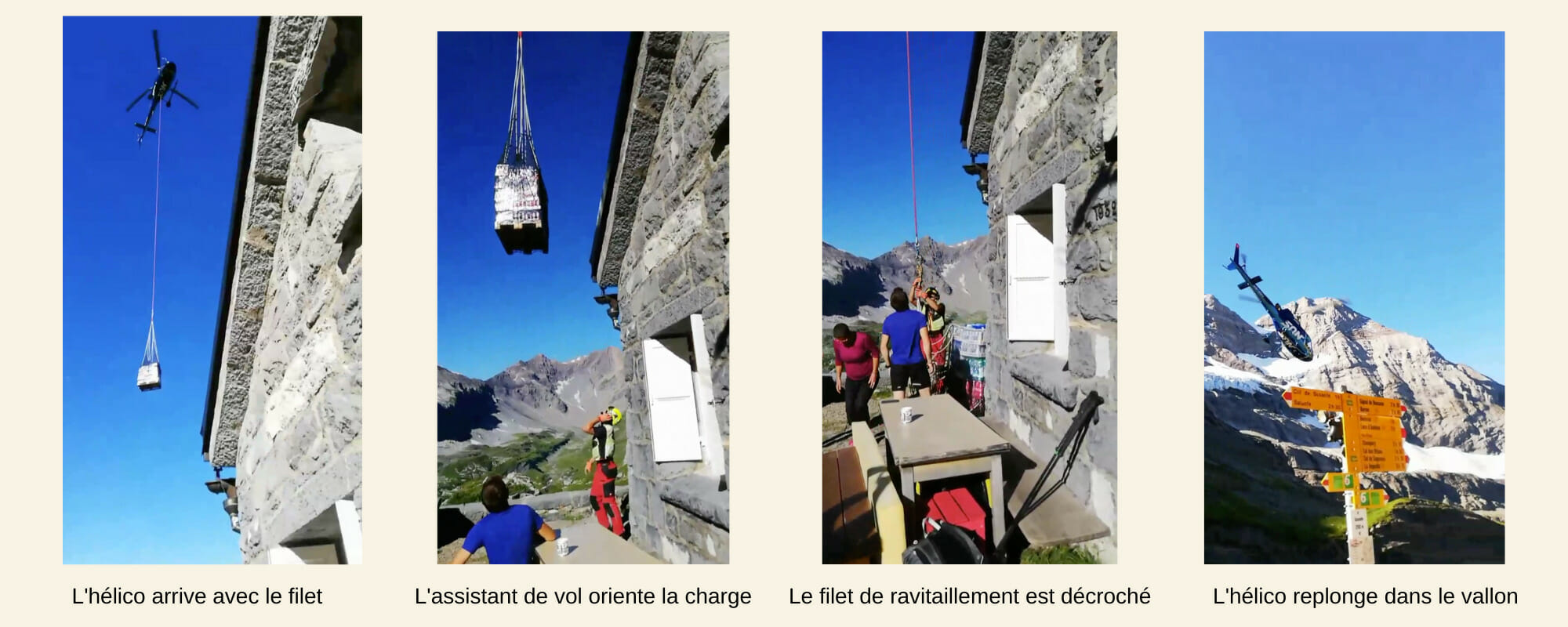
When we think about supplying, we easily think about drinks, food… But in reality there is really EVERYTHING that is brought like that: wood, gas bottles, cleaning and maintenance products and even household appliances or furniture if needed!
This summer I had the immense chance to end my first week with a day of resupply!!! Result? I was able to go down in a helicopter!!!! I was a bit apprehensive about flying (it’s quite a different experience to fly in mountain valleys) but in the end I didn’t even have the time to be afraid because it was such an incredible feeling! 🙂
Anecdote:
Stocks are a real science in the hut! When the weather is good, the cokes and beers are sold like hotcakes and on rainy days… there is no one and we make bread! In short, even if Fabienne has become a ninja in the management of her stocks after 12 years up there, well sometimes things are missing. While I was there we had a little toilet paper emergency. The helicopter was scheduled for 7 days from now and we had a pack of 12 rolls left (knowing that on average 6-8 rolls are used every day). Chartering a helicopter in emergency for 200 rolls of toilet paper would have cost a fortune… So Fabienne used her joker “phone call to a friend”. The next day, Antoine, a young guy who also works at the hut from time to time, went up for the August 1st party with some friends. Before coming up to the hut Antoine went to the supermarket to empty the shelves (fortunately the toilet paper crisis of the confinement was over) and the next day he loaded all his buddies with 2 packs of toilet paper. What a relief for us to see them arrive from the bottom of the valley with 50 rolls of small pink leaves on their backs!
August 1st celebration at the hut:
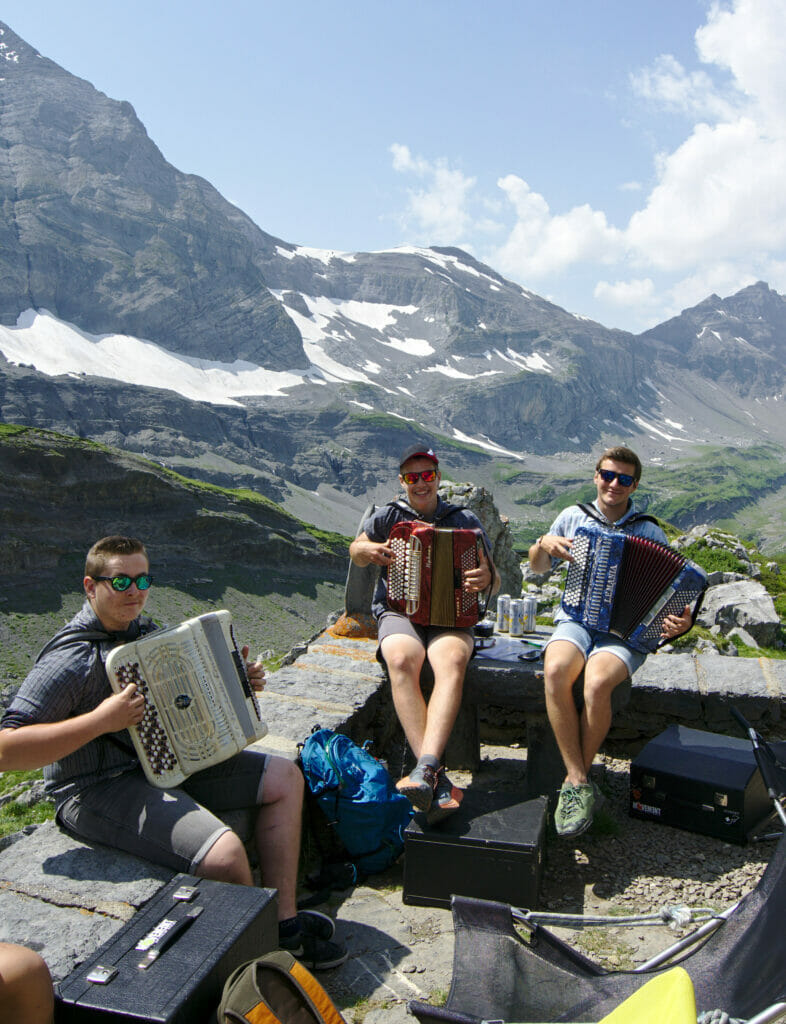
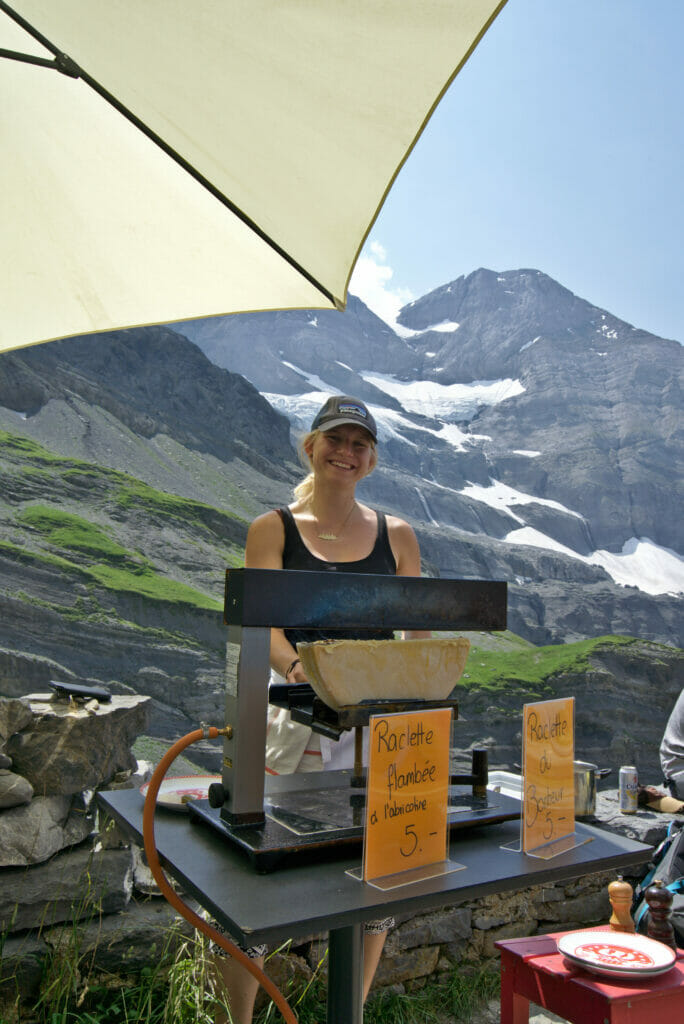
The staff of the hut: a real little family in a marvellous valley
You will have guessed it through the article, but I came back totally under the spell of this experience. Susanfe, the valley, the beautiful Dents du Midi, the contact with the hikers and so on… But I think what I remember most is the incredible atmosphere that reigns in this little hut of happiness. Both Fabienne and all the staff who work there during the season or like me for a few days is just EXCEPTIONAL!
Before going up Benoit used to joke to me: “uhhhh you know that helping out at the hut is a student job? You’re going to be the dinosaur of the team!”
Haha then certainly, with my 34 years old I was clearly a little “grandma” in the middle of the helpers who are normally more between 16 and 23 years old.
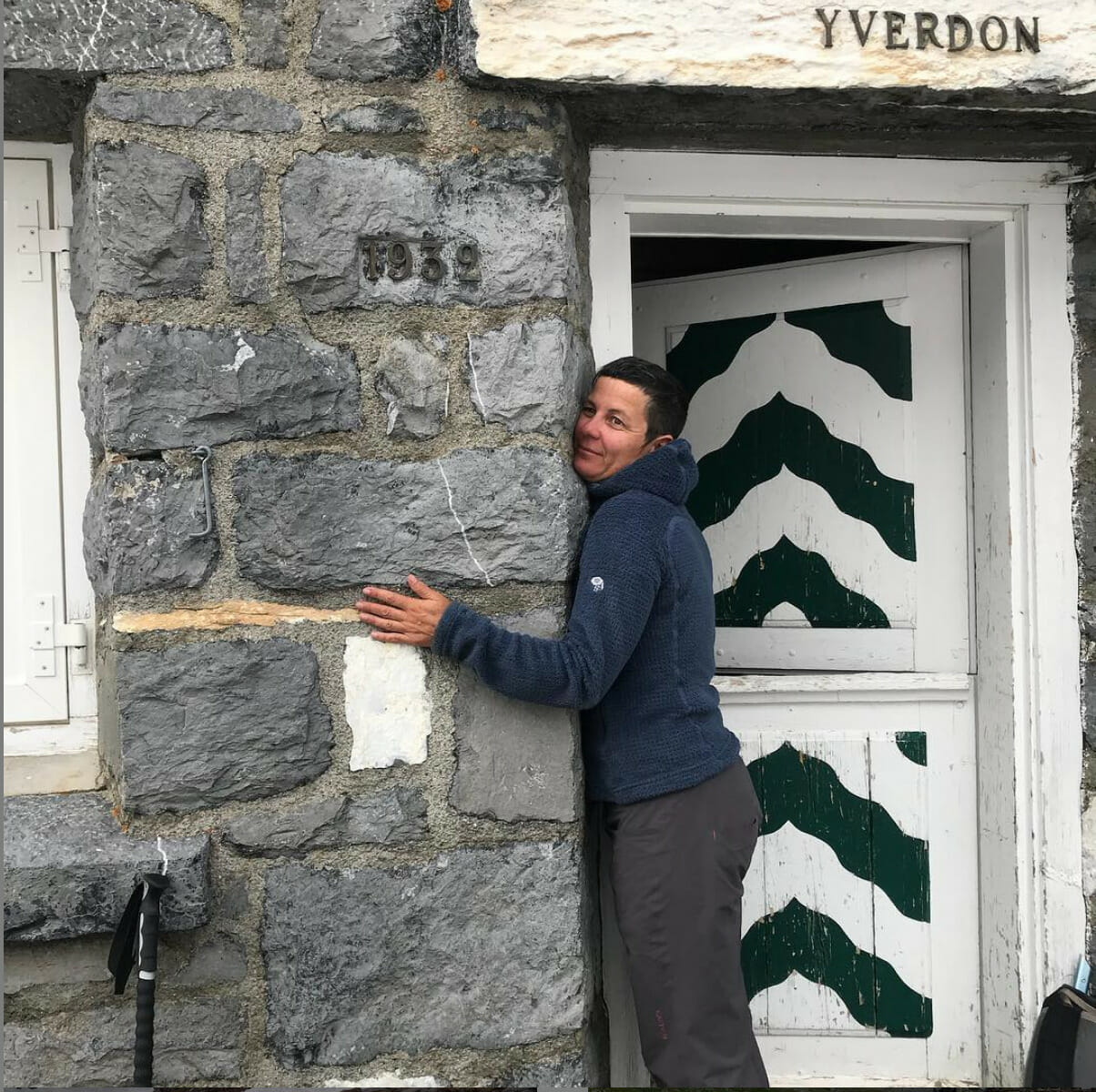
But I might as well explain that at no time has this been a problem, quite the contrary! The job is sometimes hard, the rhythm is steady but everyone is super motivated and the work is always done in a good mood and fun has a place of honor in the team!
I leave Susanfe with, among other things, a deep admiration for the job of hut keeper! As a helper you already do a lot of job, but I can guarantee you that being a keeper is one level above. Fabienne has been managing this hut for 12 years and the least we can say is that she puts all her heart and guts into it. She has created a real little corner of paradise up there and for that I take my hat off to her!
Besides, if you are intrigued by this job, I advise you to go and have a look to the serie called “Refuge de montagne” on RTS (in french or german). Each season, they portray refuge guards in Switzerland and the show follows them in their daily tasks. They haven’t come to Susanfe yet, but who knows? If someone knows someone at the production, don’t hesitate to suggest them this incredible hut! 😉
For me, this sweet interlude during the summer was a real breath of fresh air! In our work we are certainly a lot on the go but we also spend a VERY considerable time in front of our screens (in reality it’s the vast majority of our time, it’s just the part we don’t present so much). For some time now I really felt the need to have more “human contact” again but also to “do something with my hands”. I don’t really know how to explain it but even if physically I left the hut washed out, psychologically I’m just re-boosted as much as possible! #MountainLife
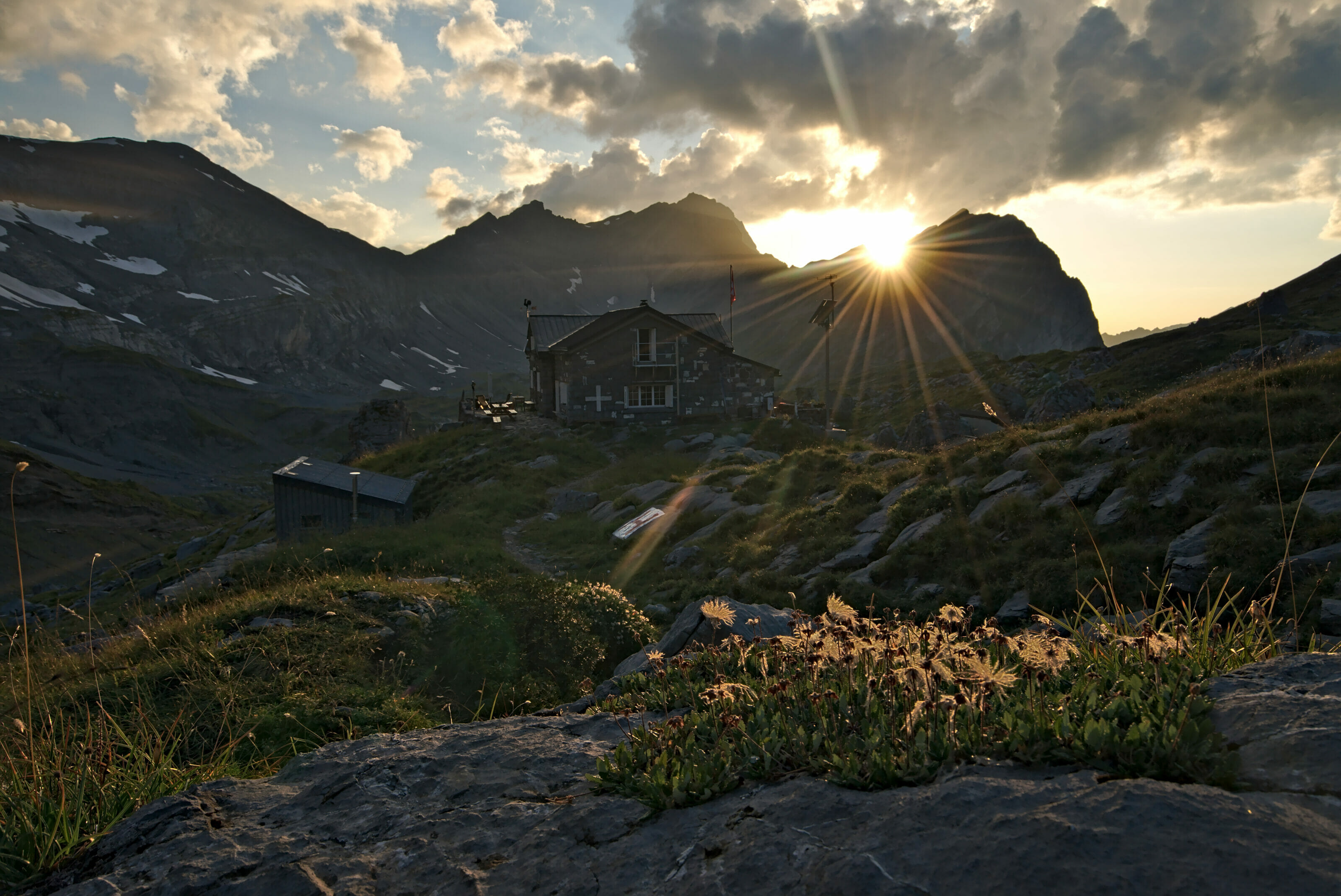
What next? So I can reassure you, I don’t plan to leave Benoit every summer to go work full time in a hut, but on the other hand I already know that this first experience is only the beginning! Once you’ve gotten a taste for the hut, you can’t leave it anymore! In short, there is a very good chance that you will see me up there again one day… at least I hope so!
I would like to warmly thank Fabienne and the whole team for having welcomed me with open arms and for having made me discover this very beautiful job. I will definitely come back!
If you want to visit this incredible team you still have until October 5th of this year to go (or if not, as early as June next year)! All info, phone number and access are on the Susanfe Website
To follow them on a daily basis and not miss any event it is on their facebook page or Instagram account that you’ll have to go.
Pin it

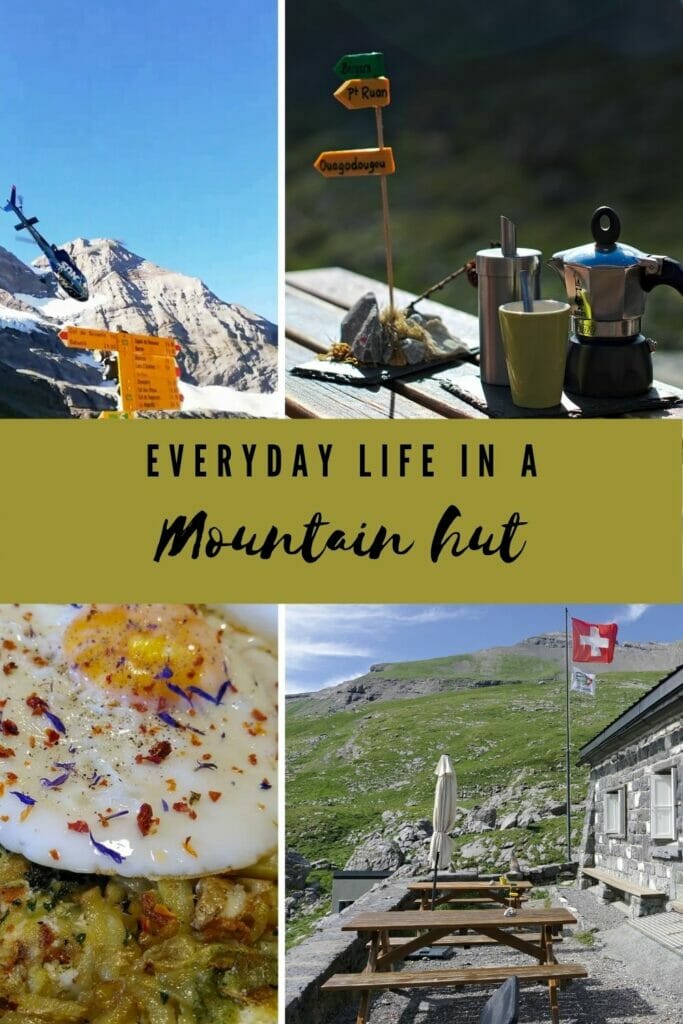

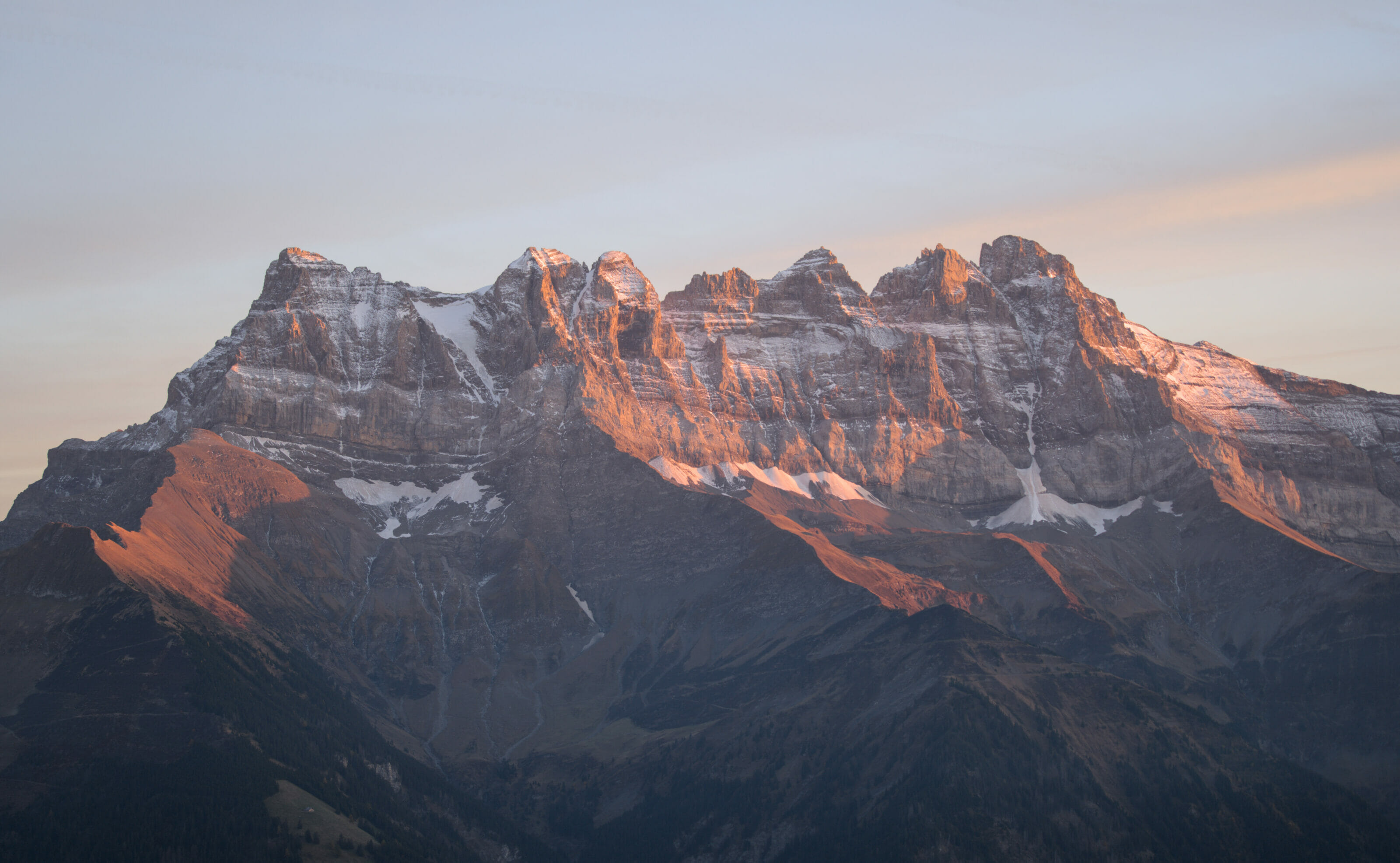
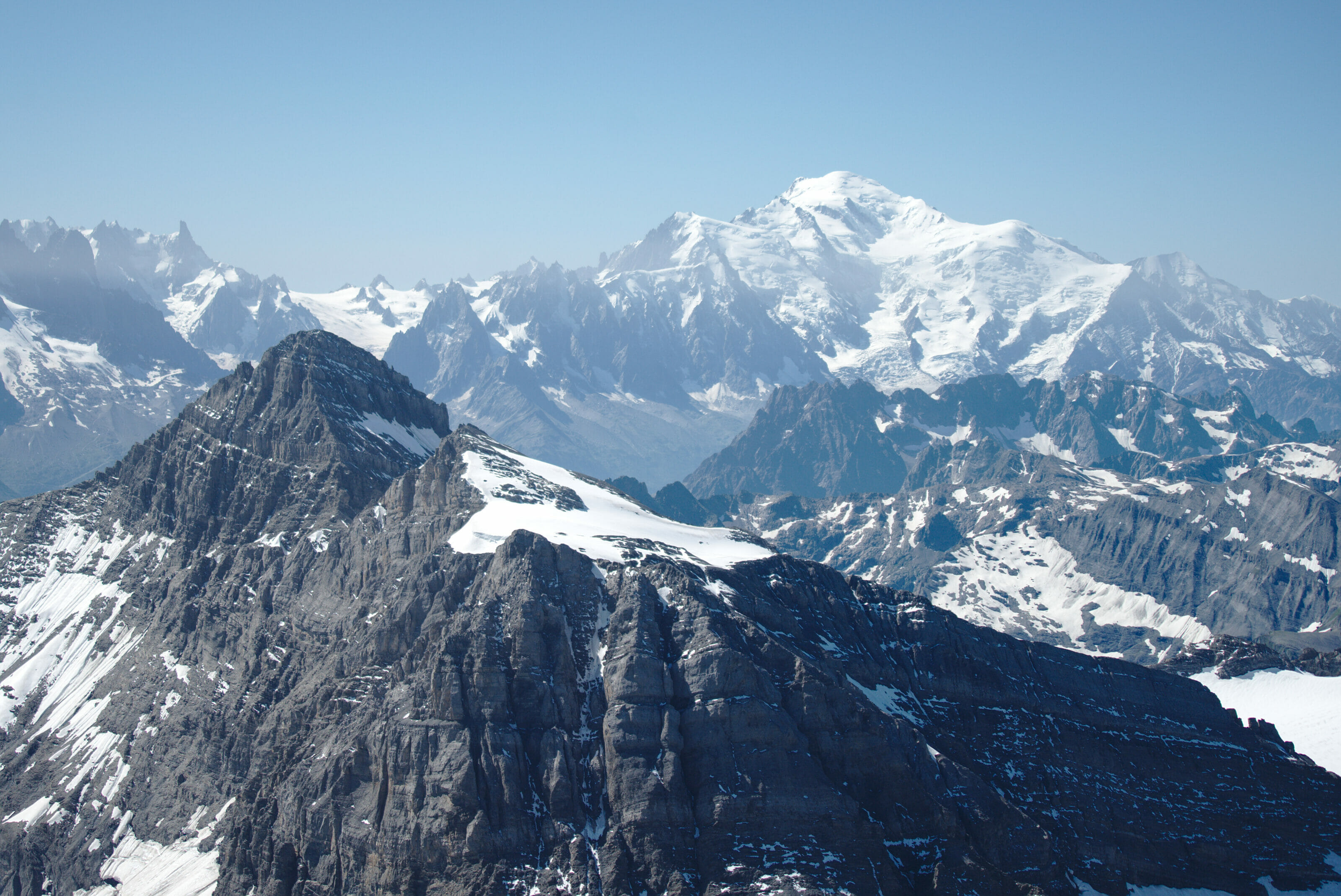
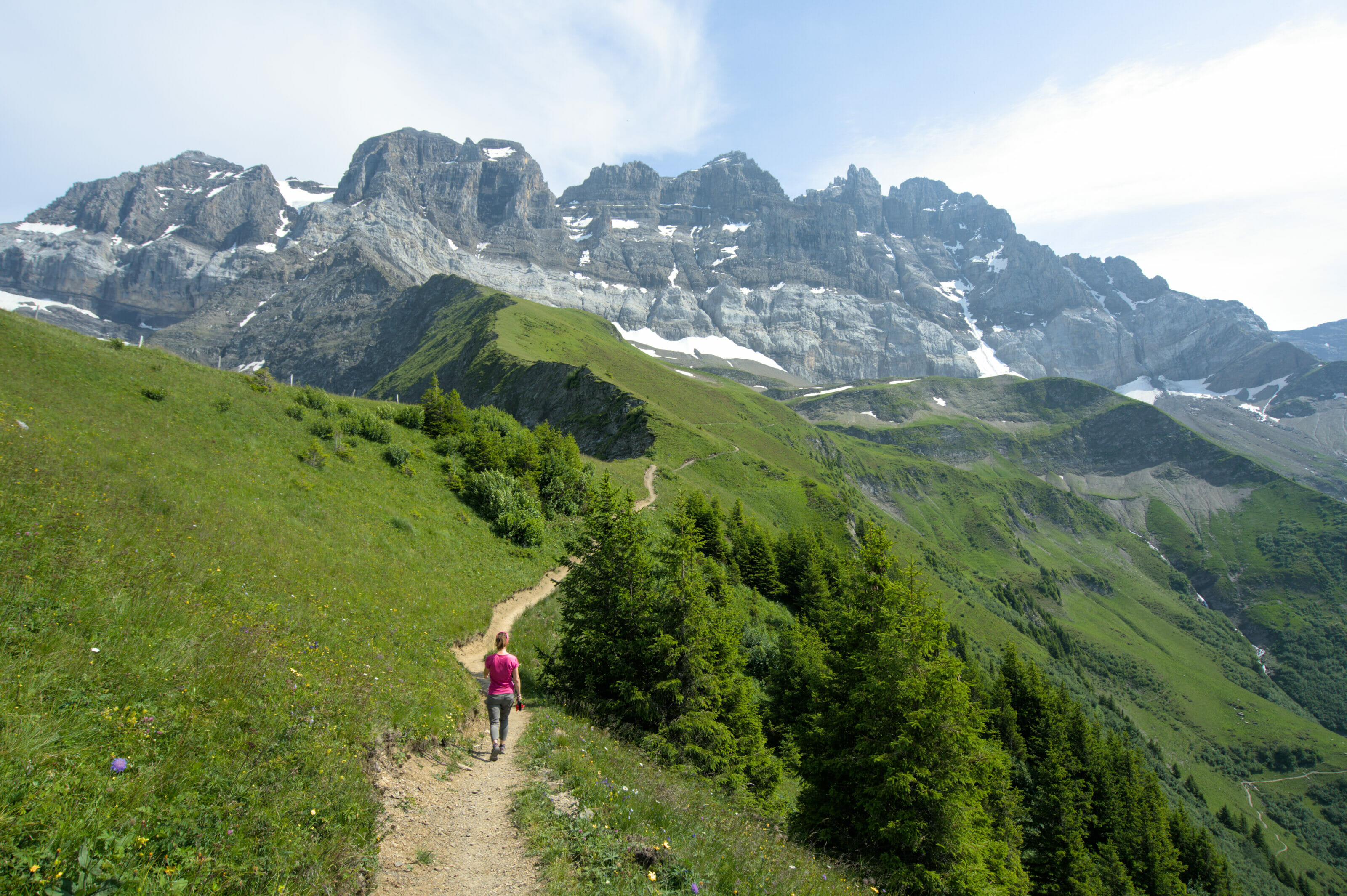

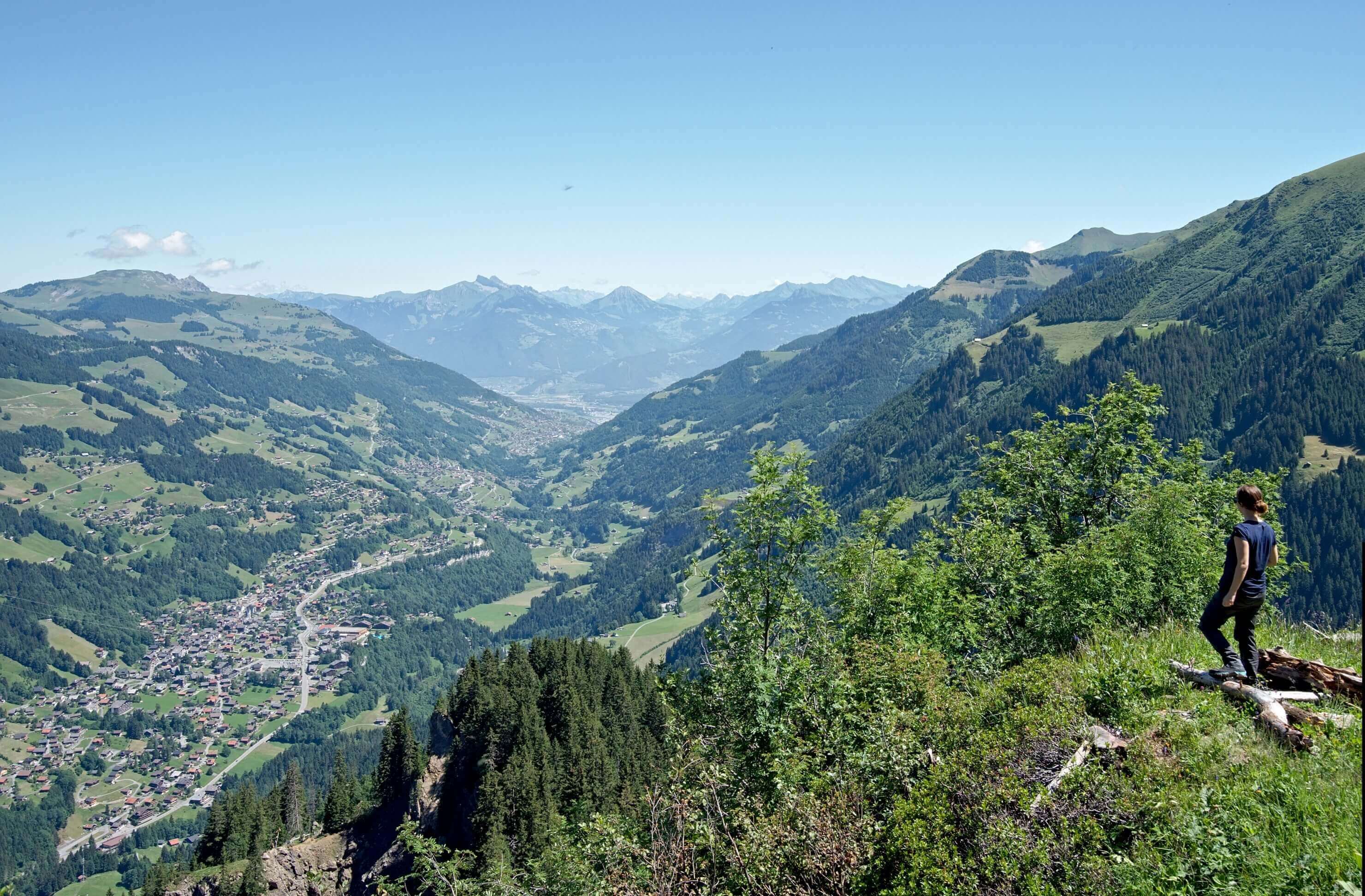
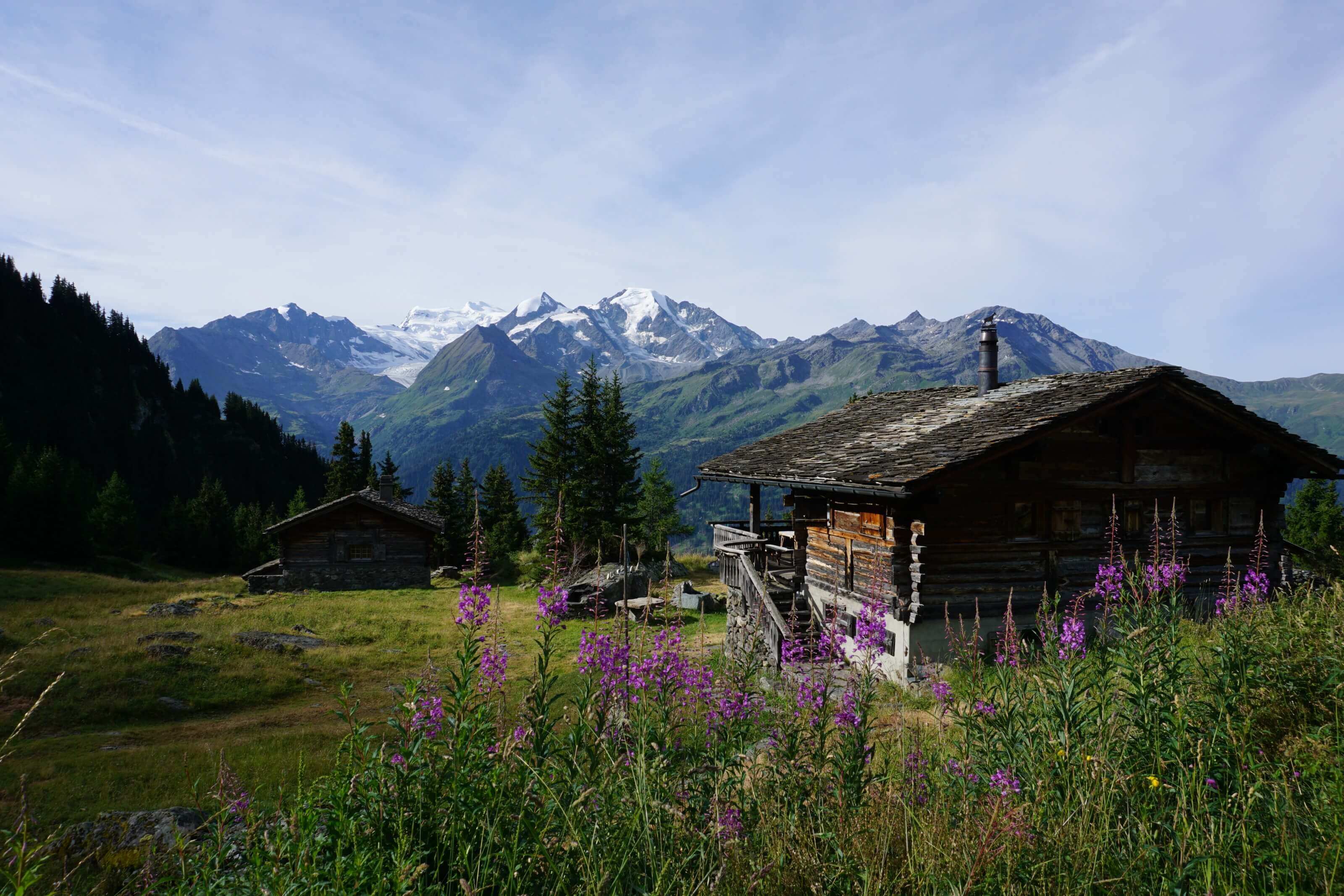
Join the discussion